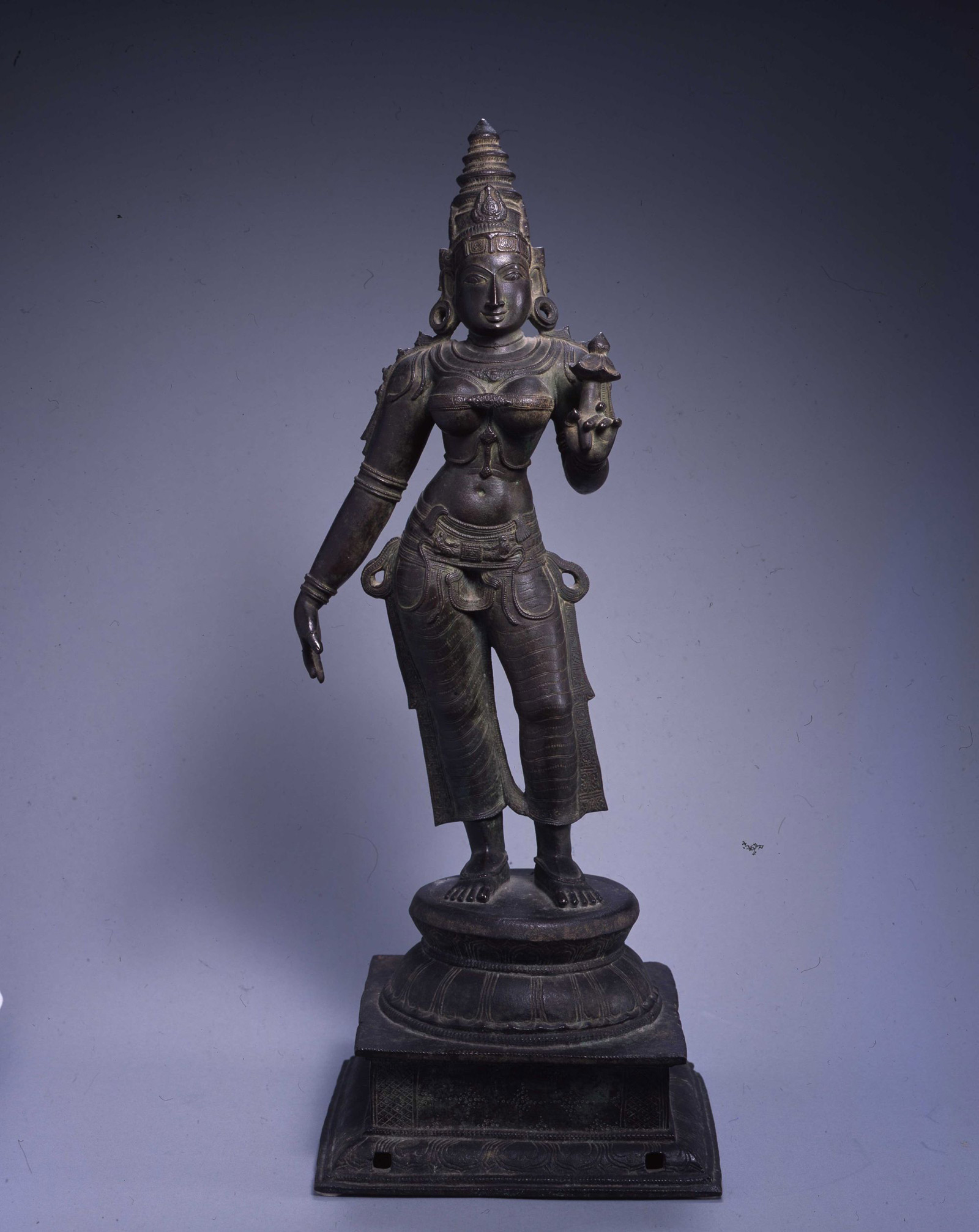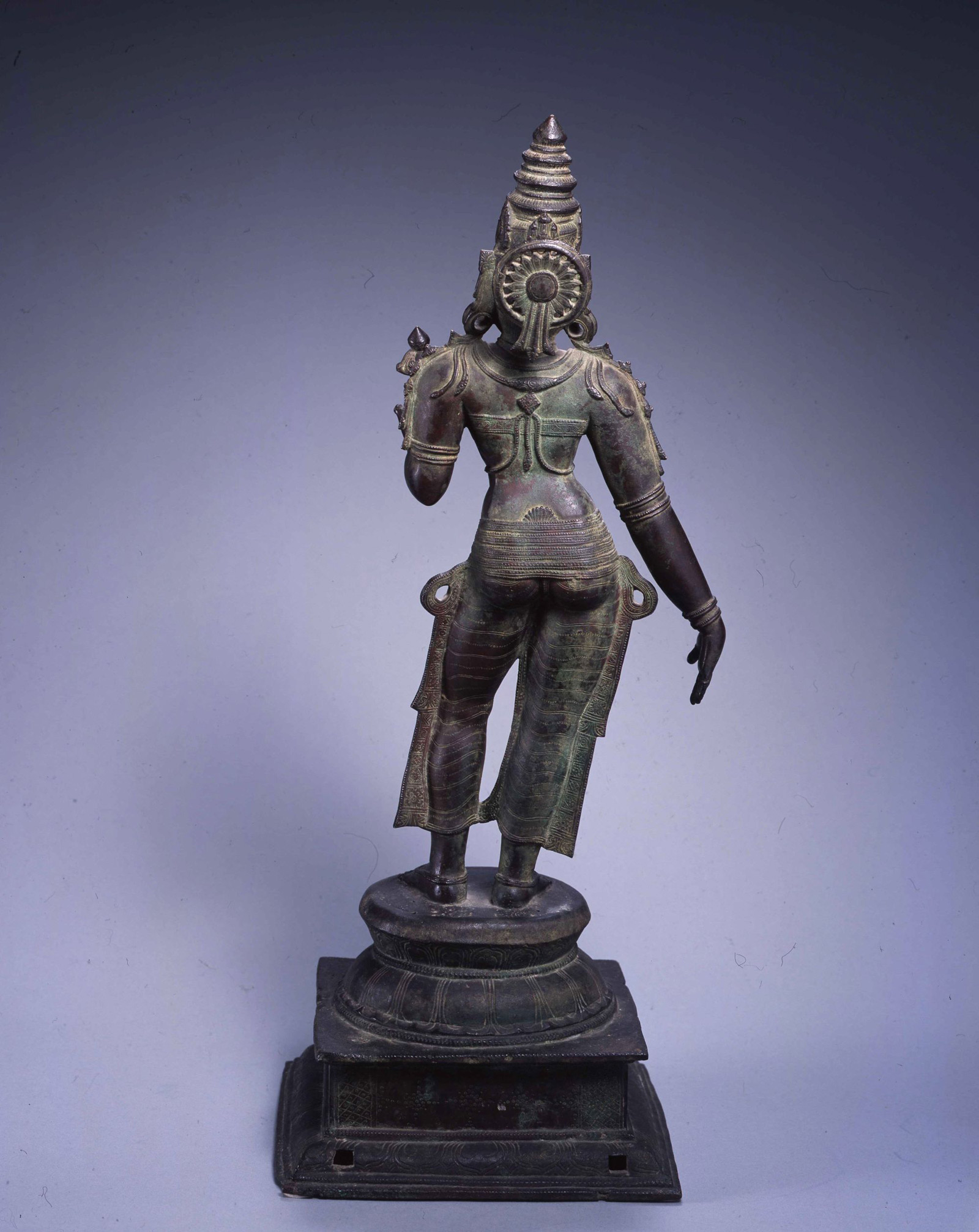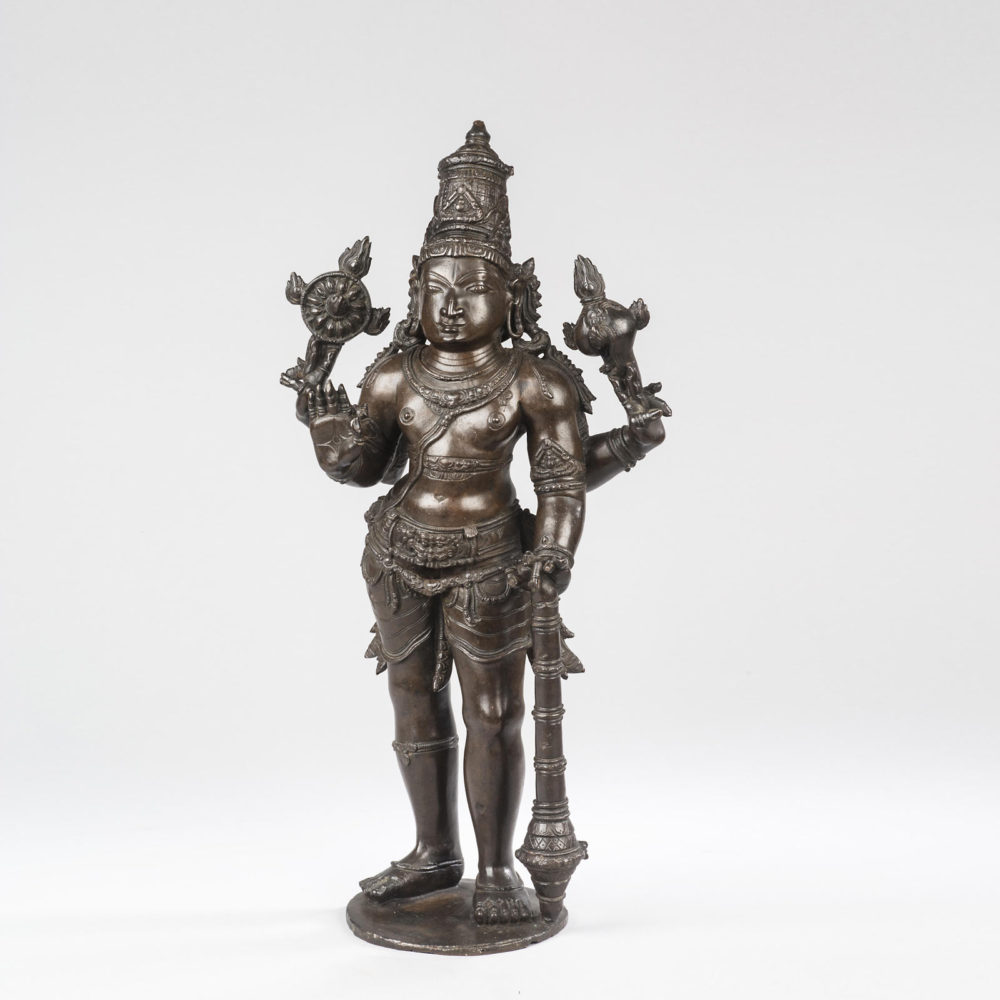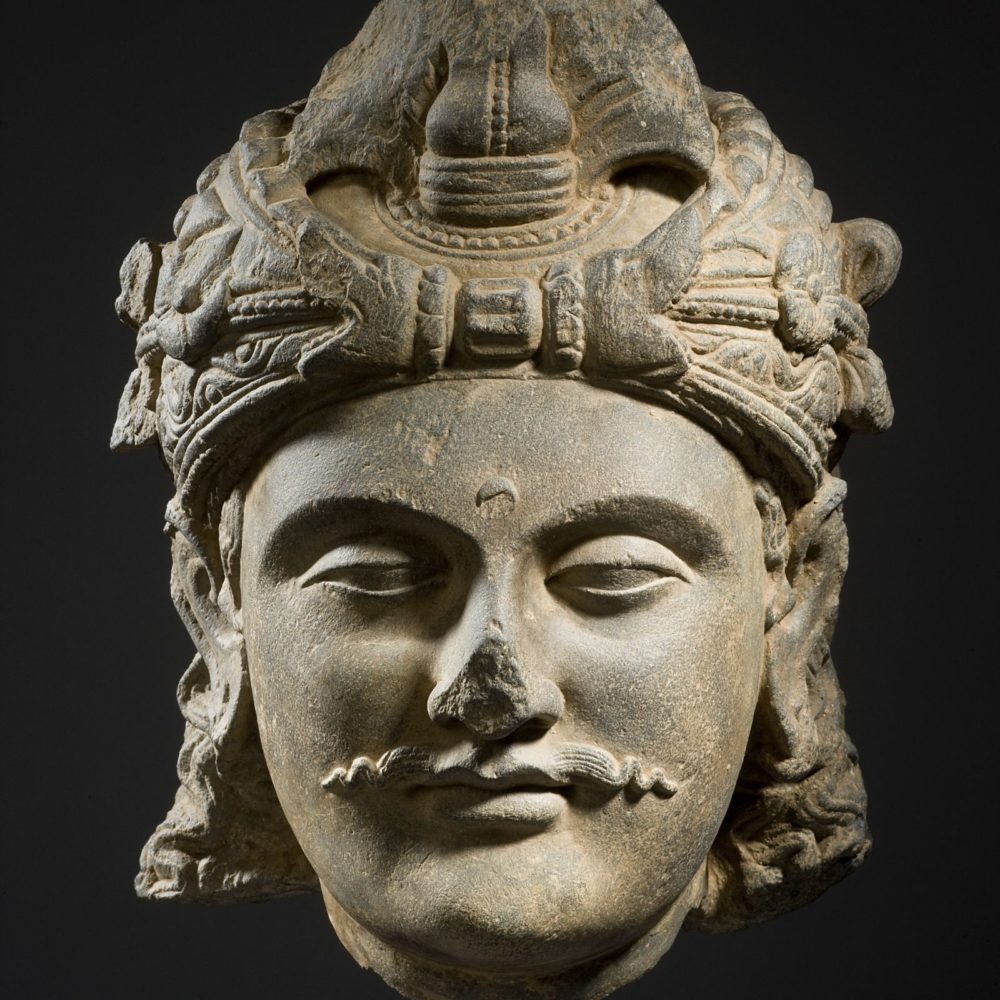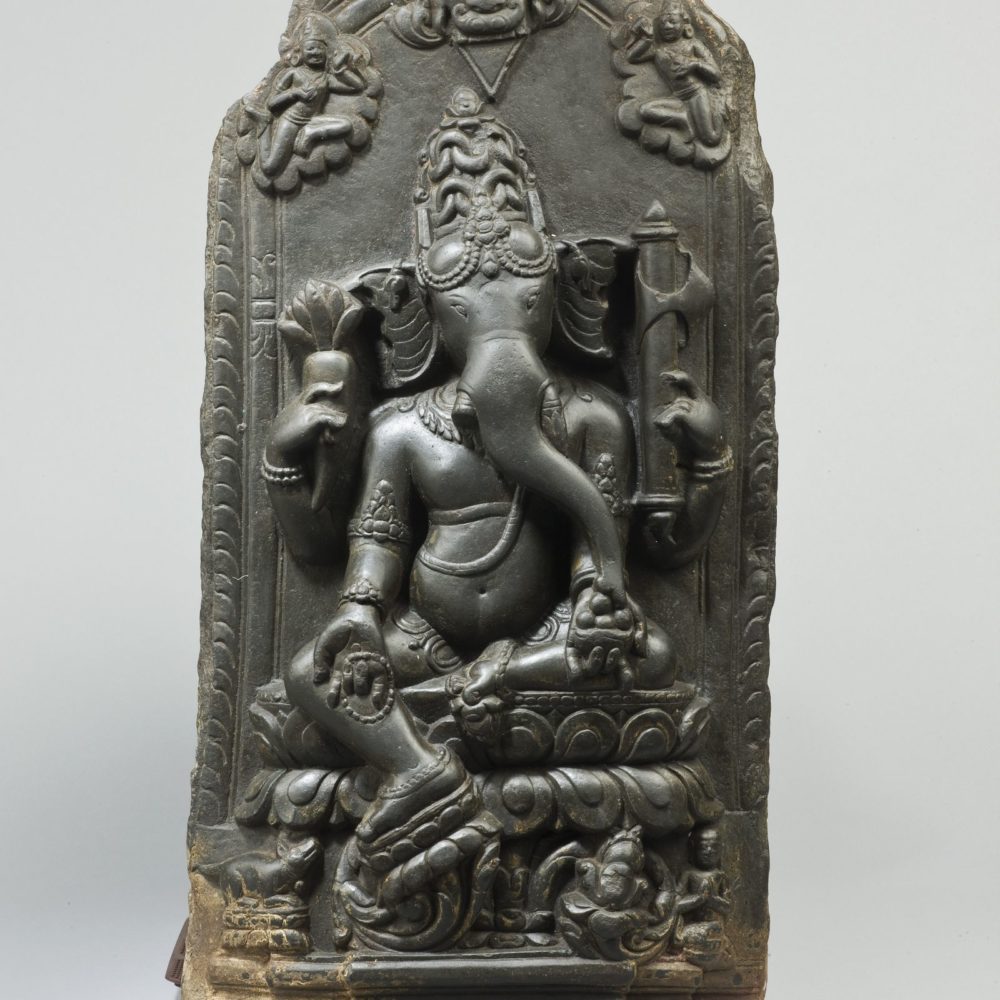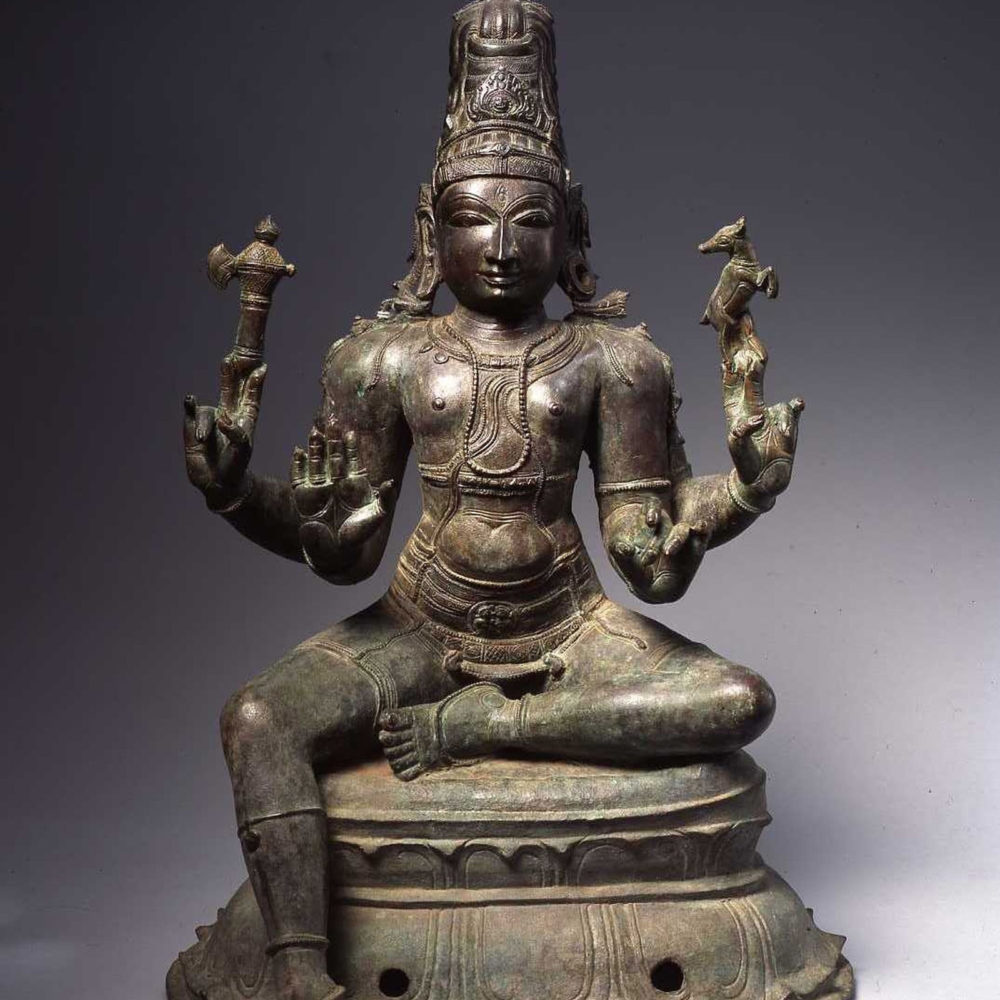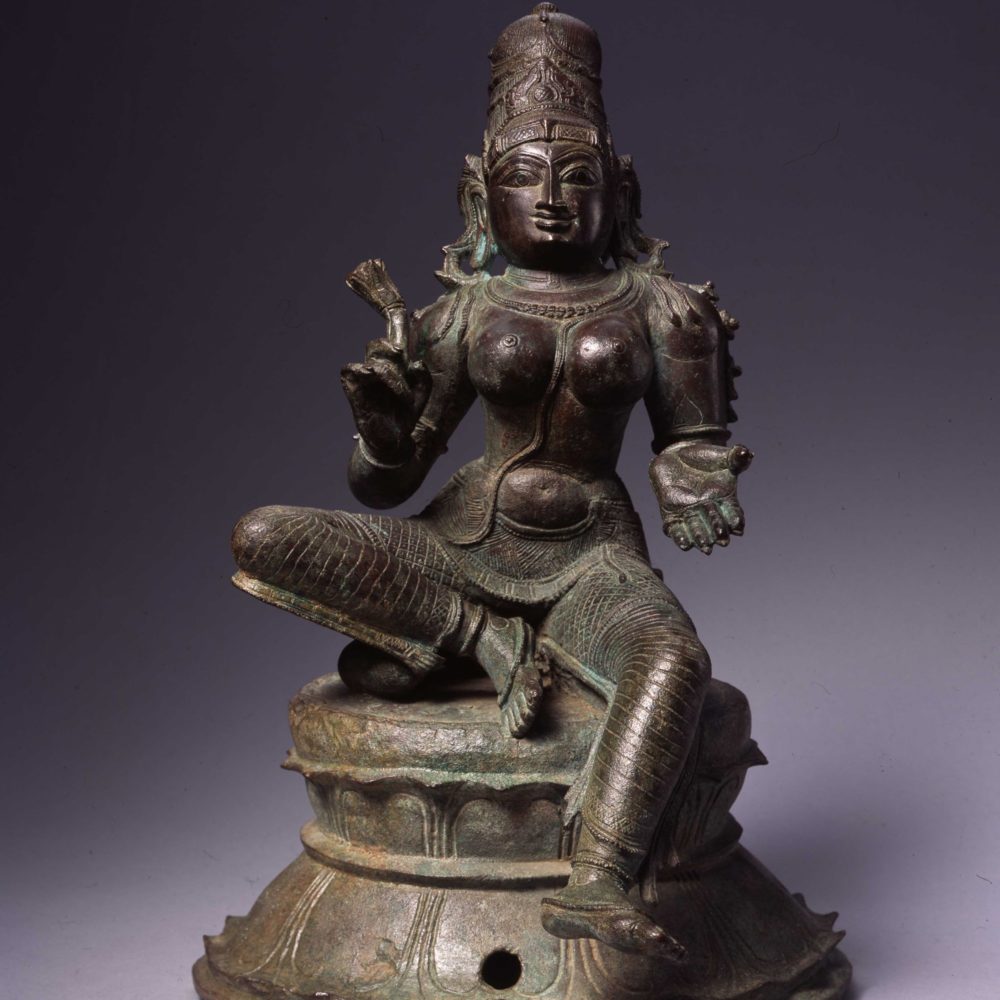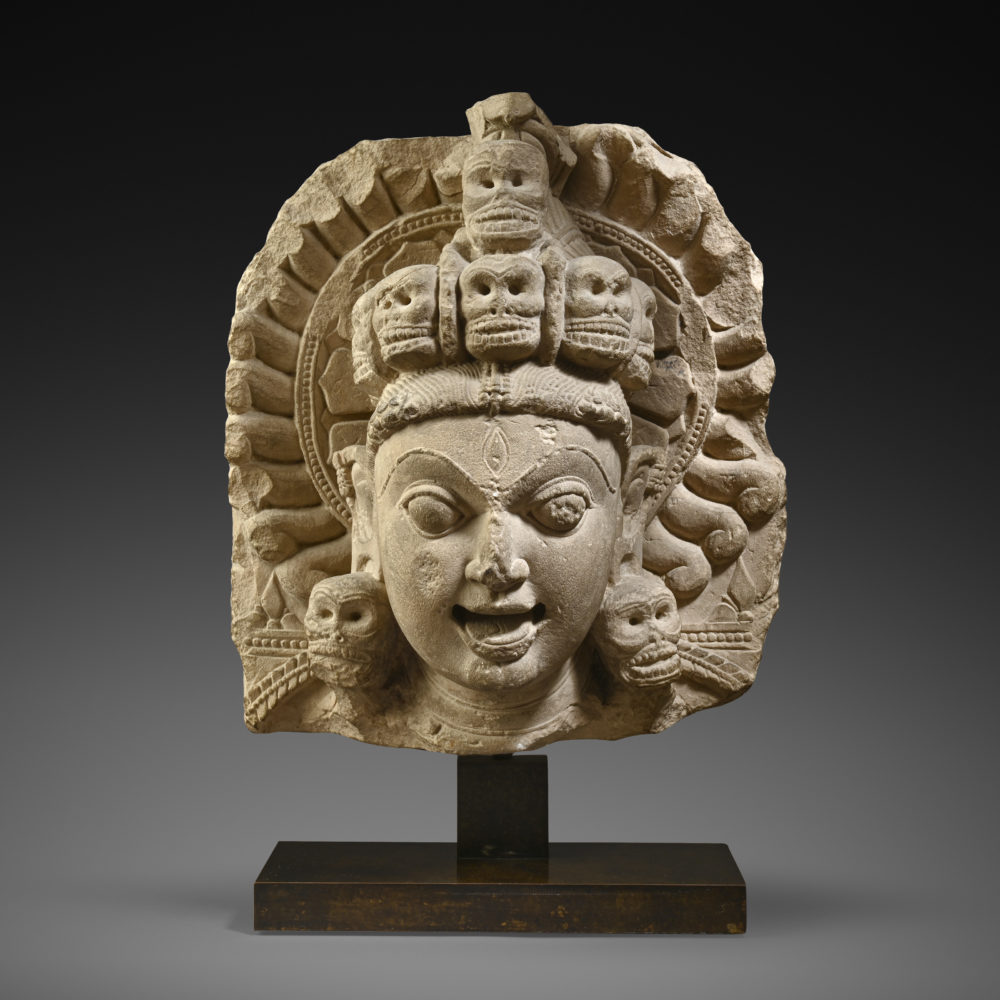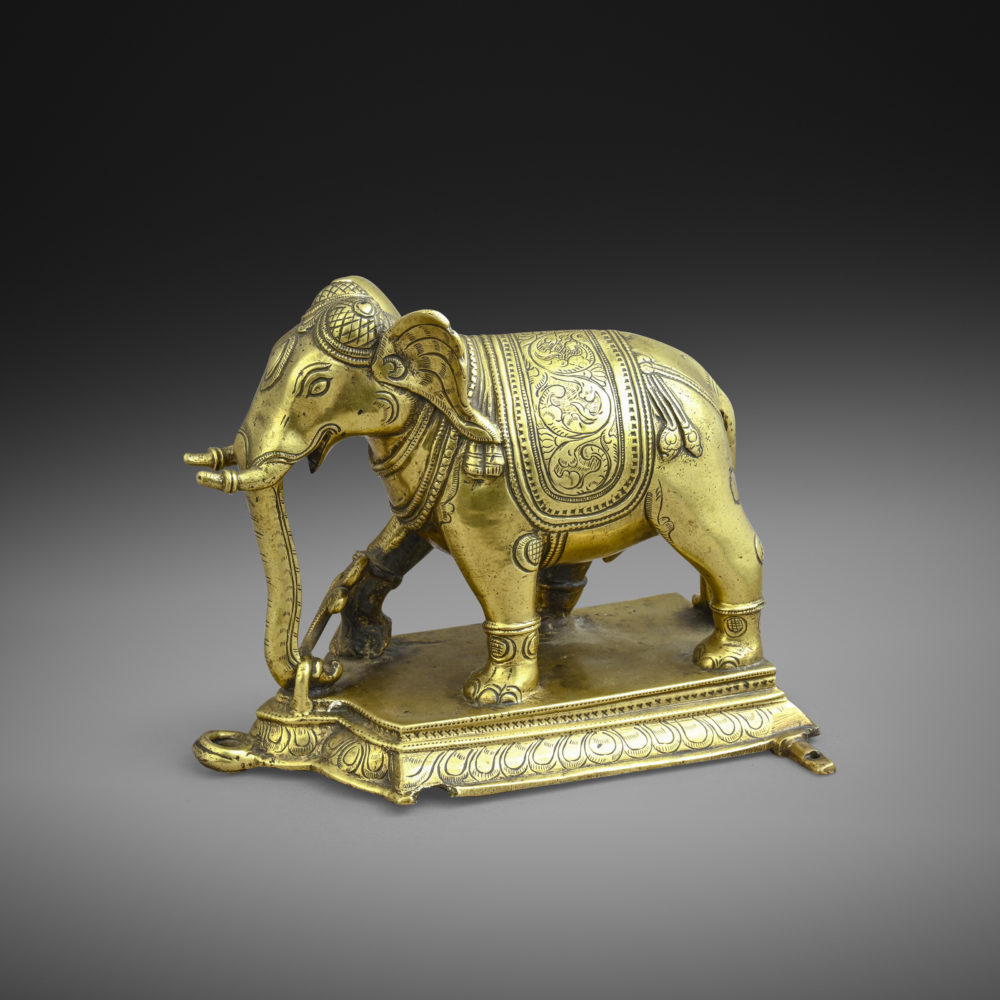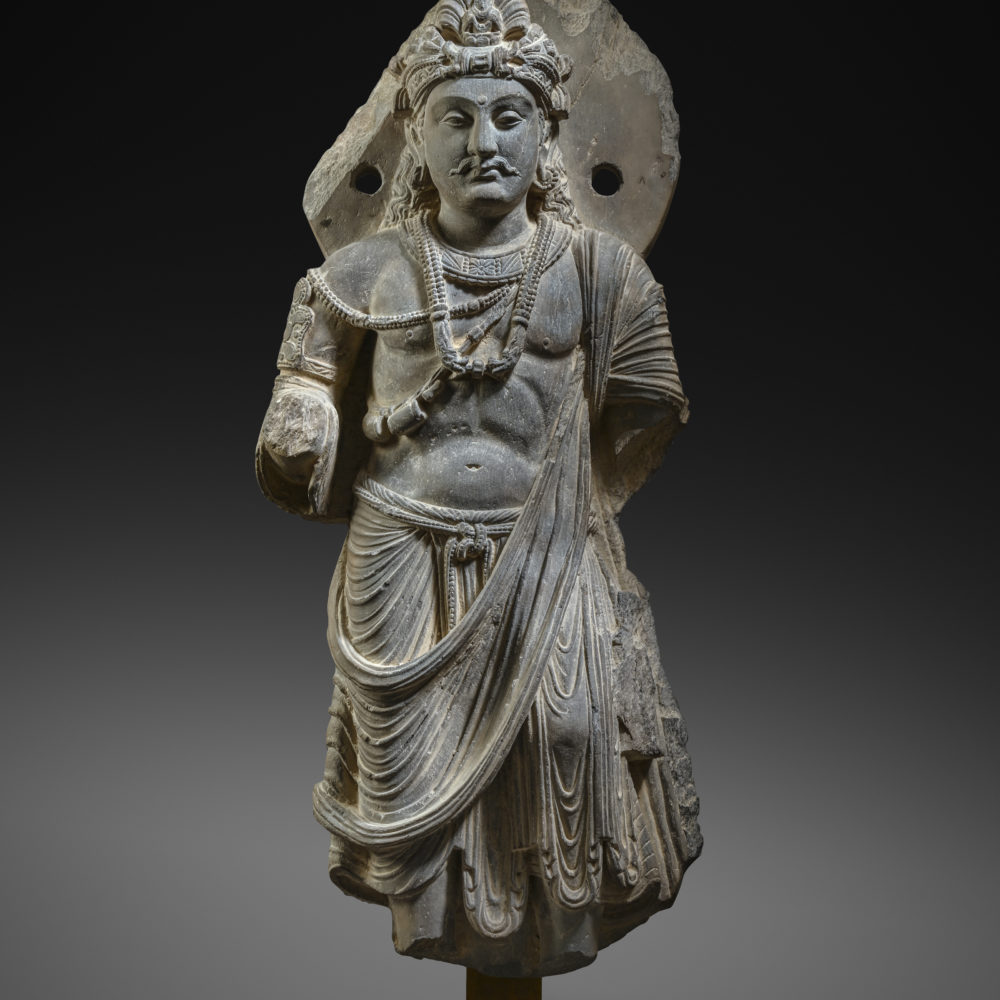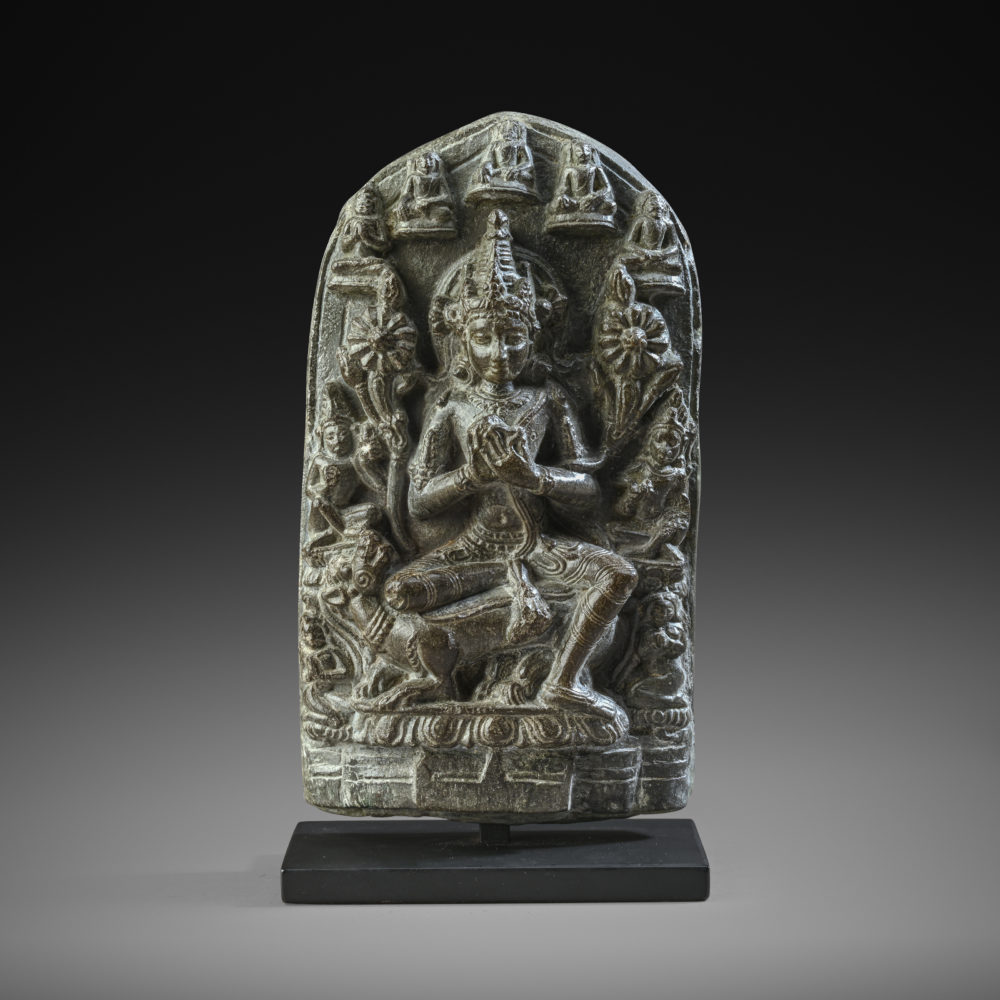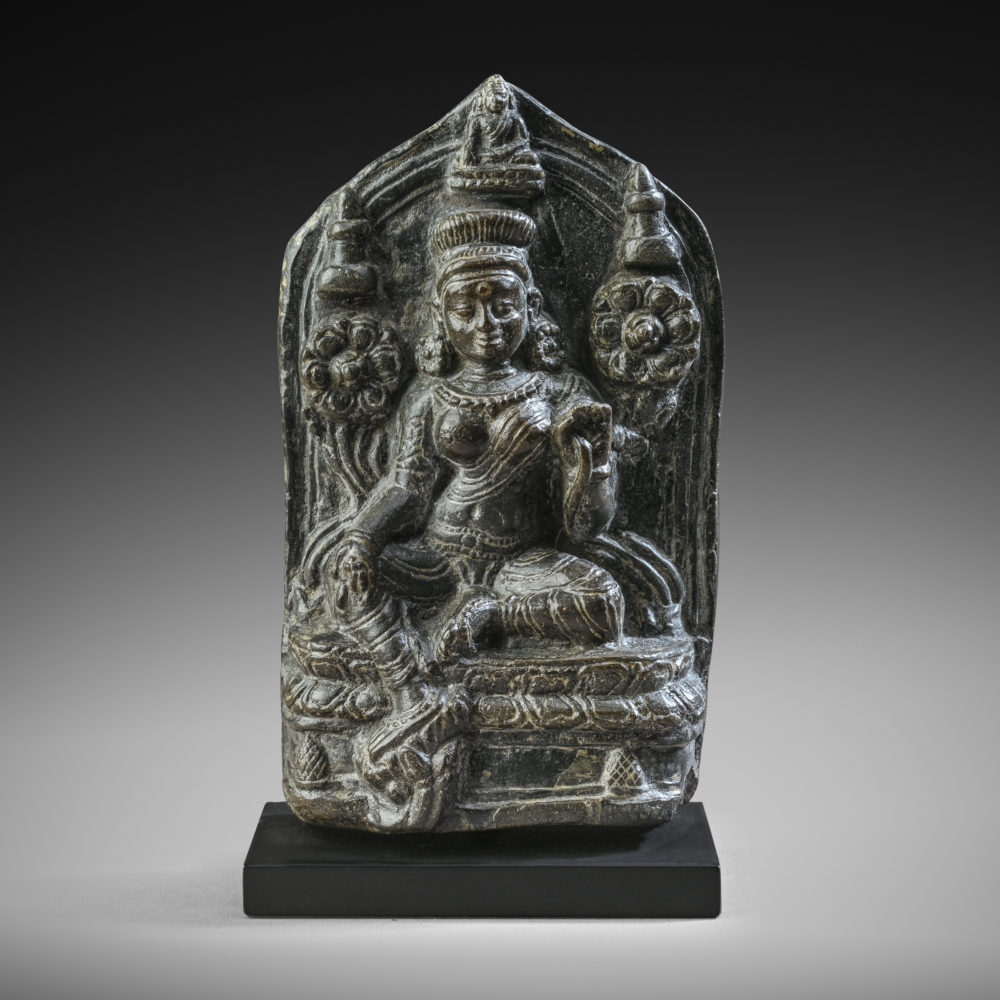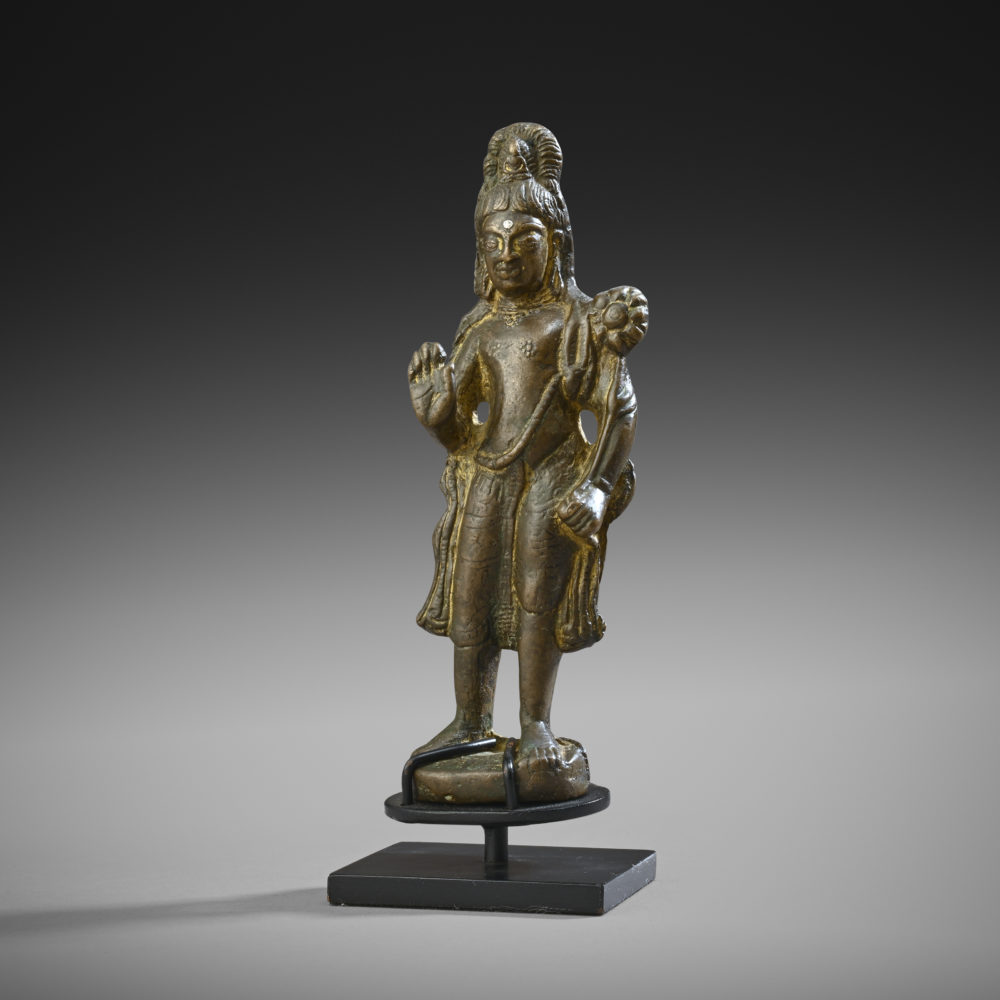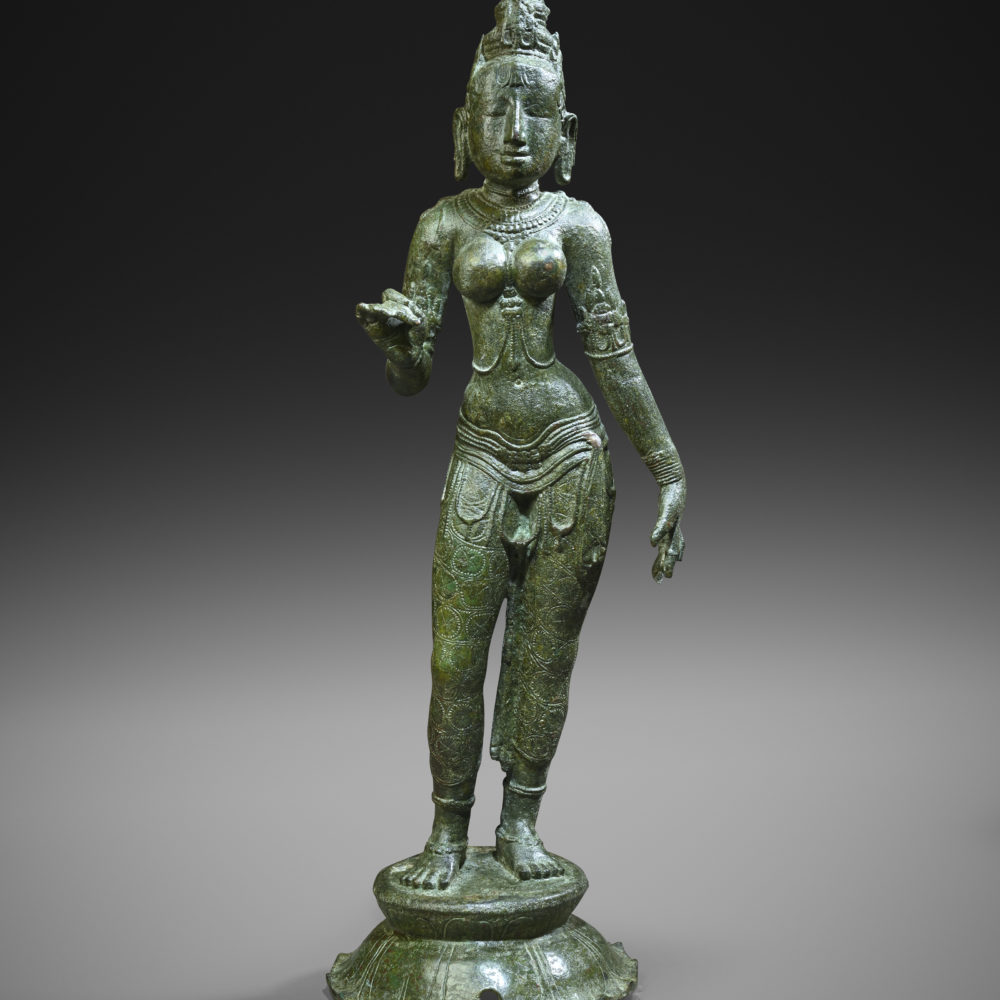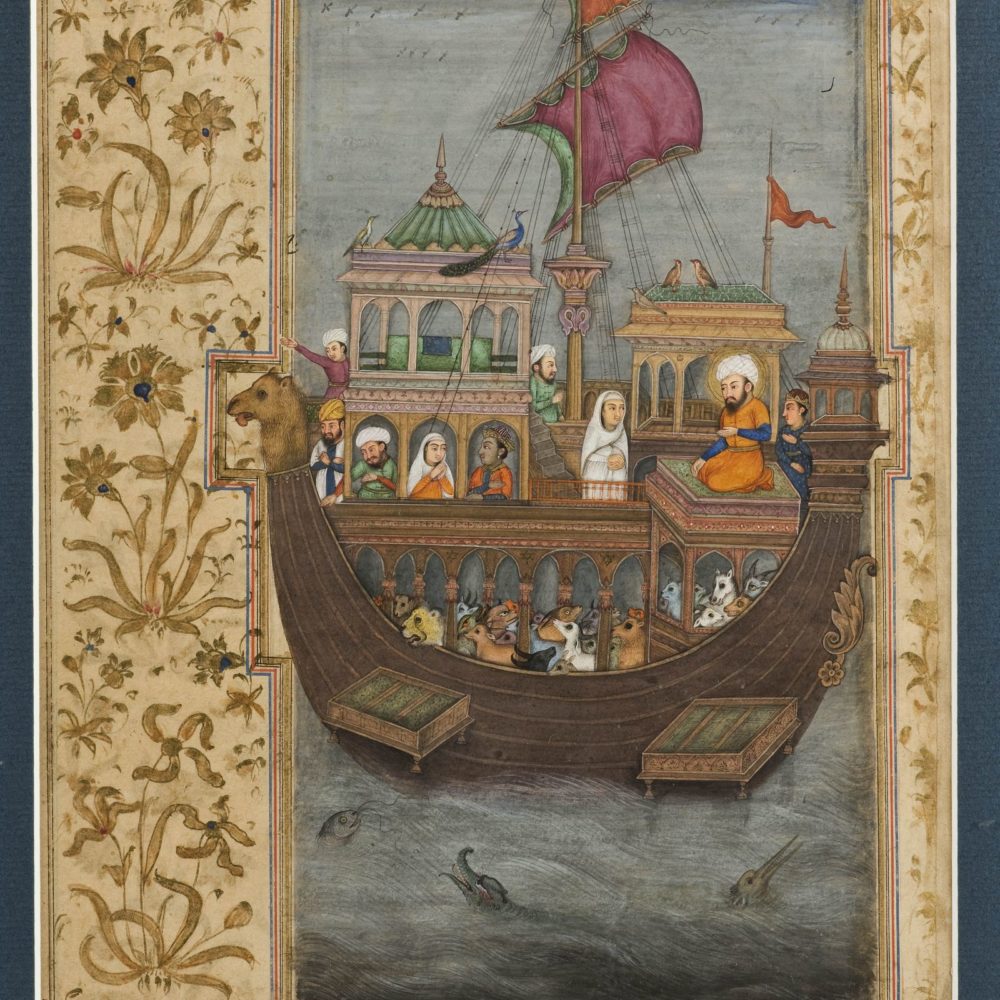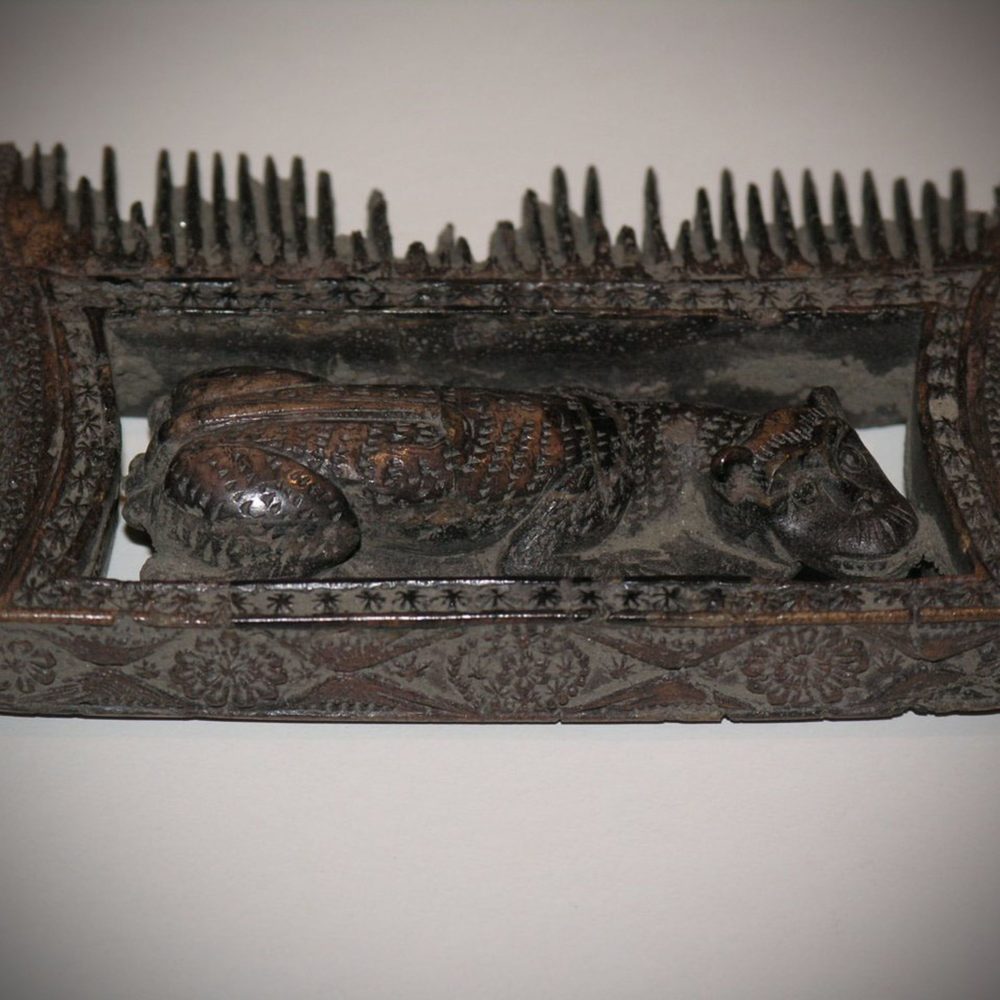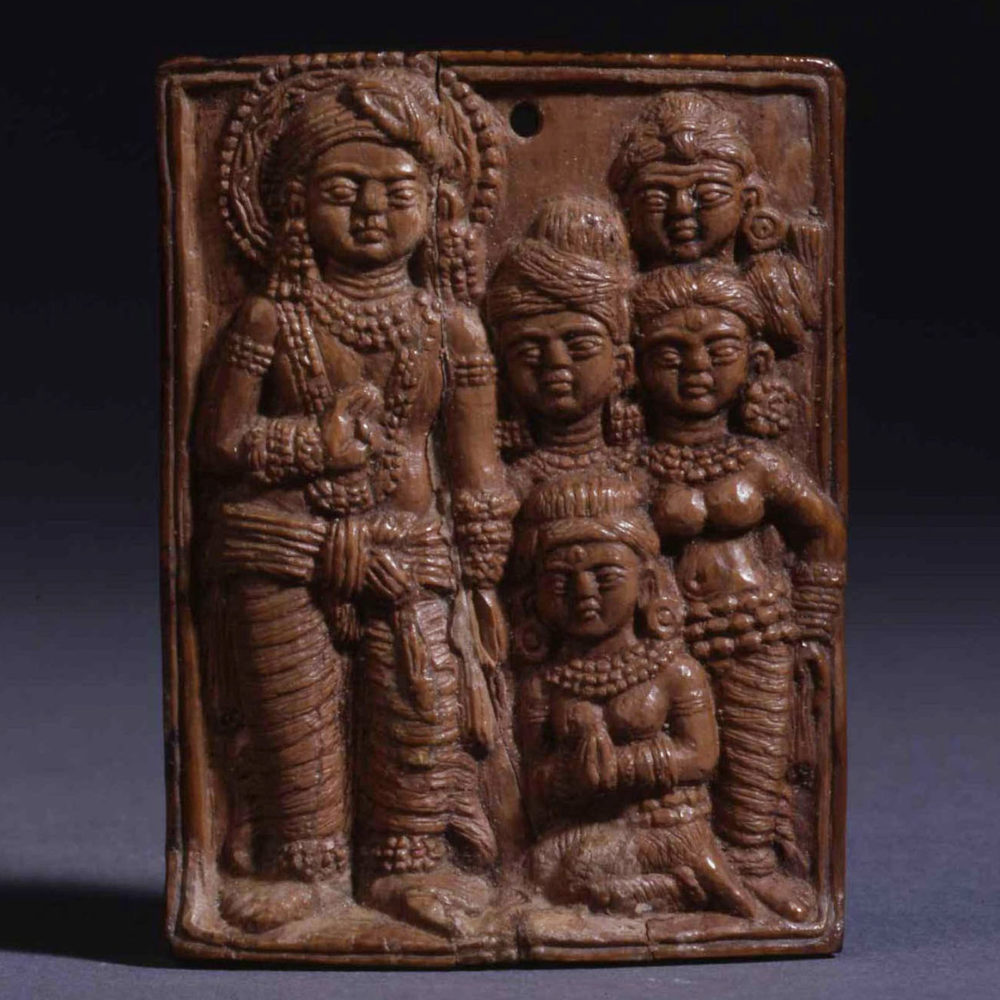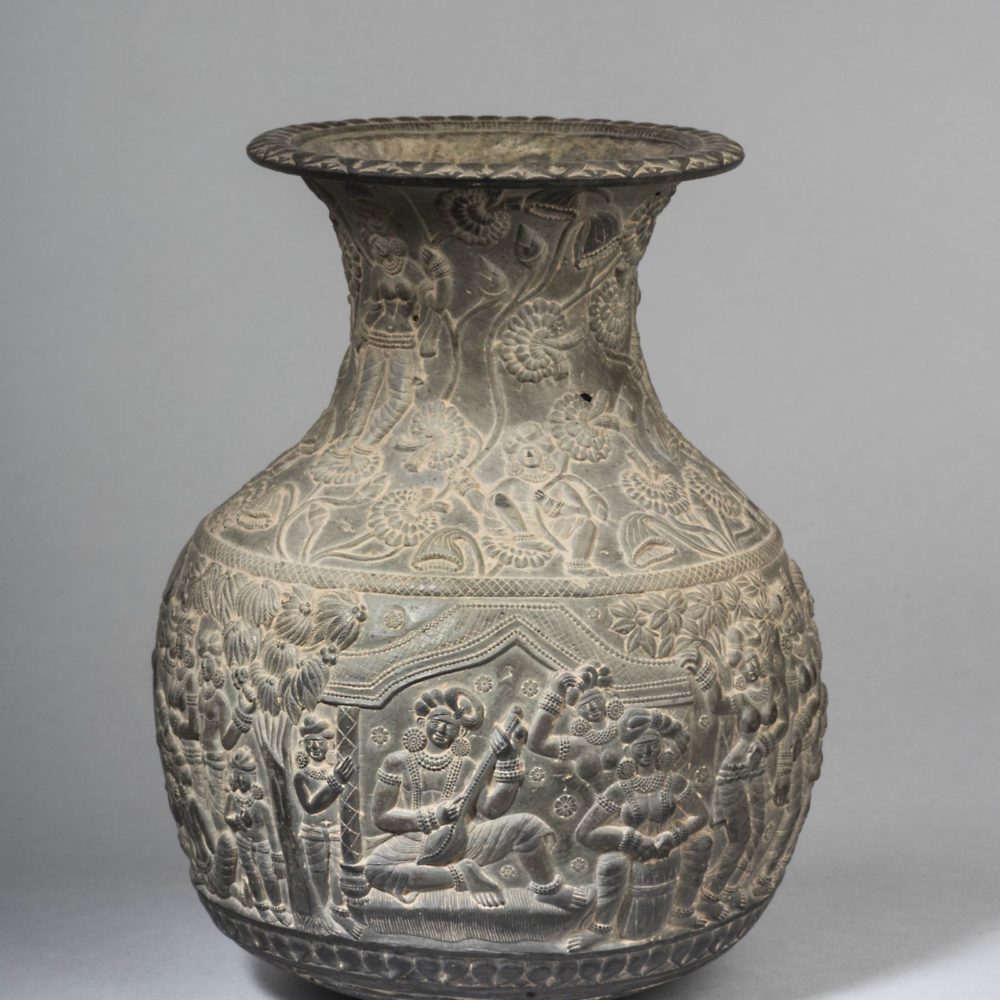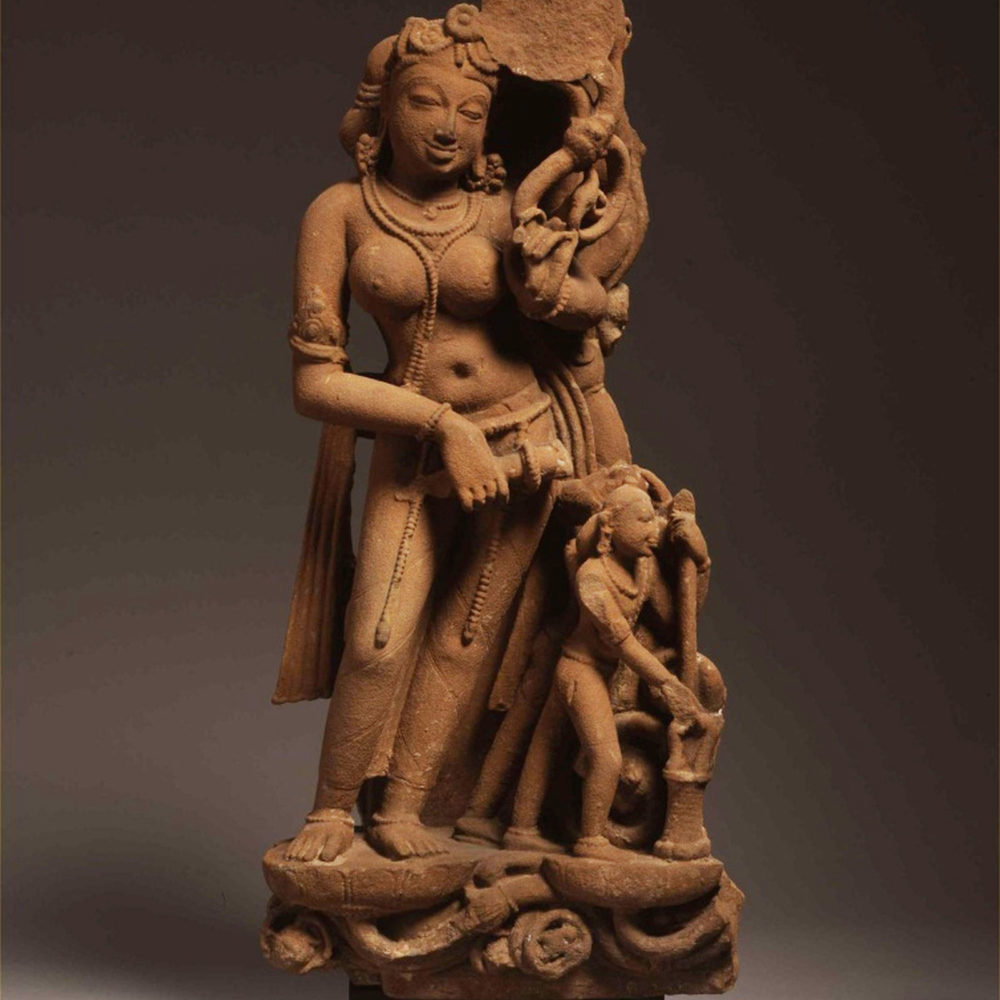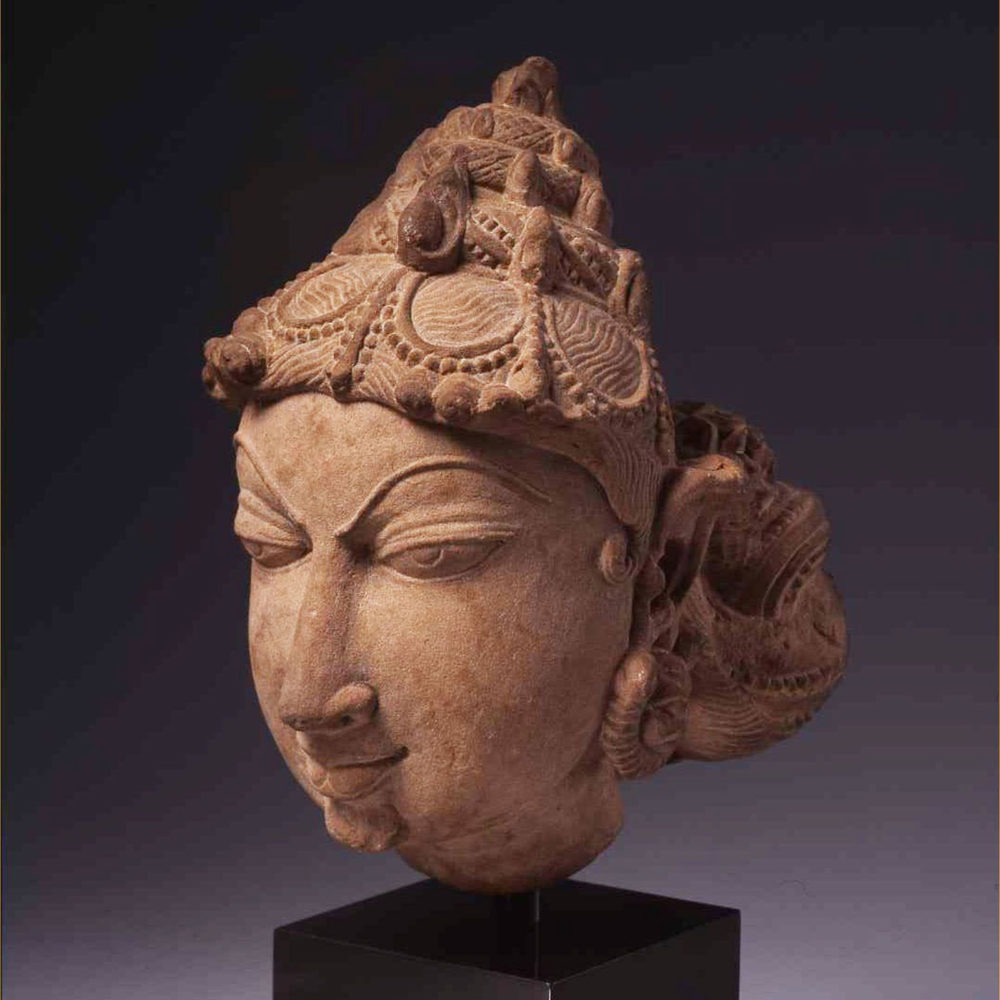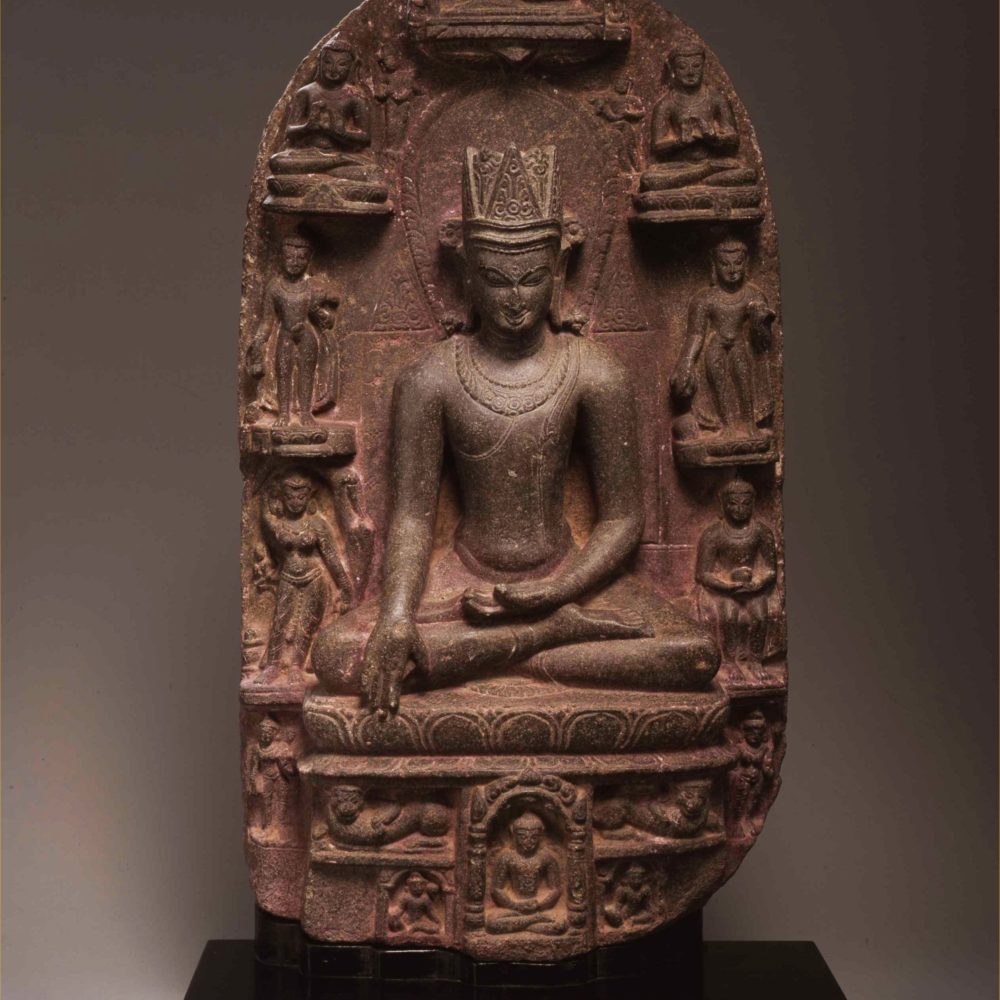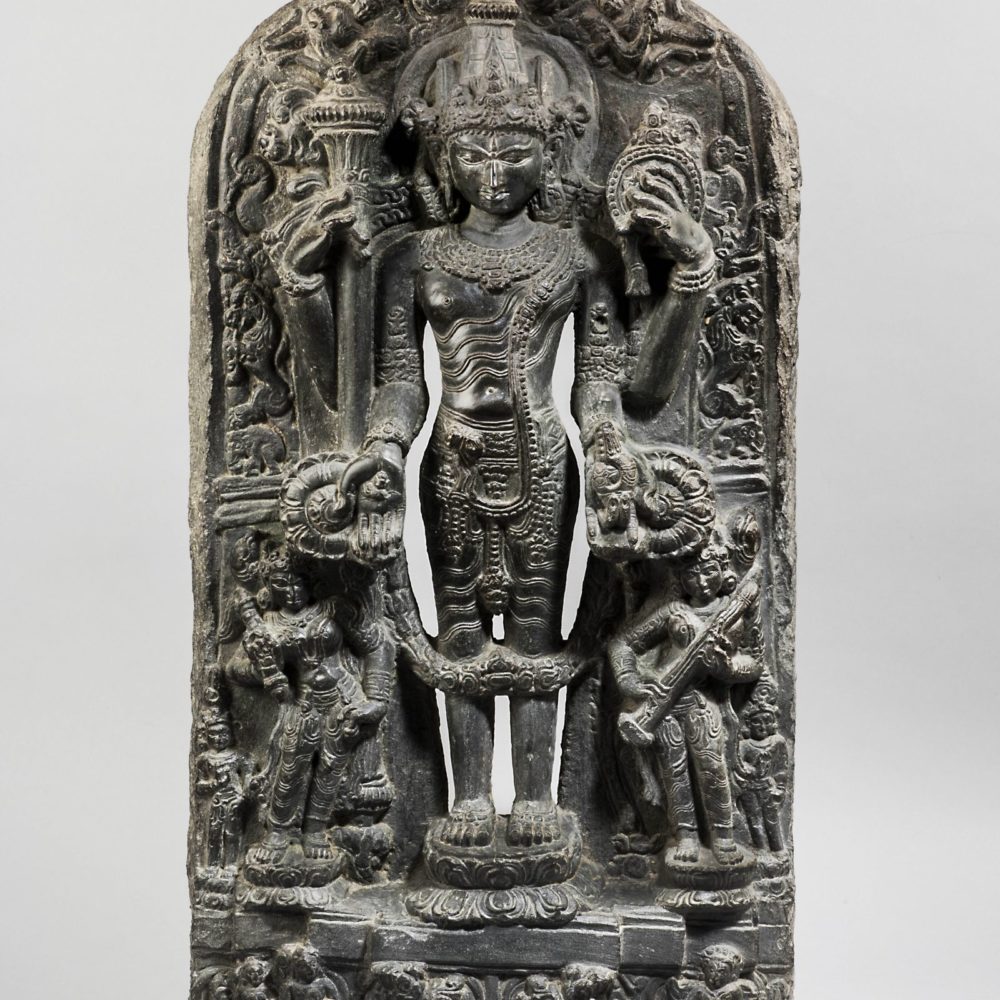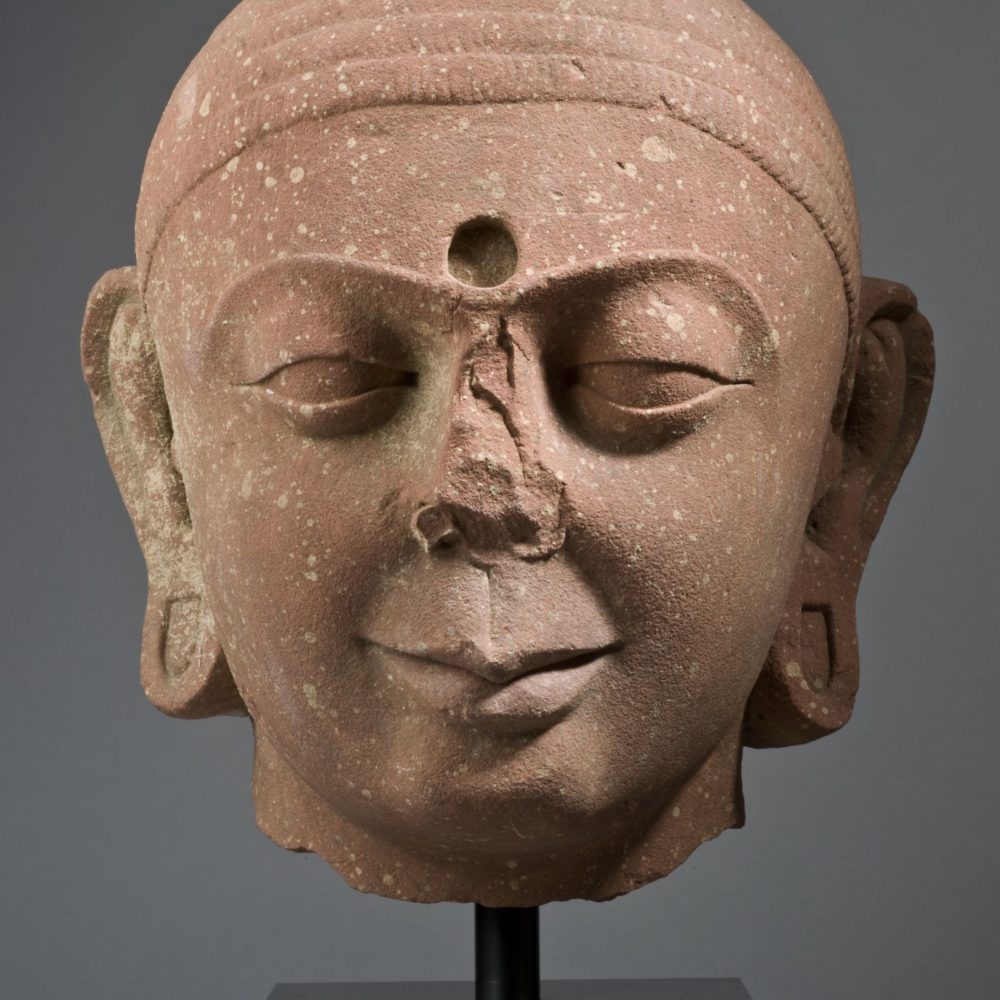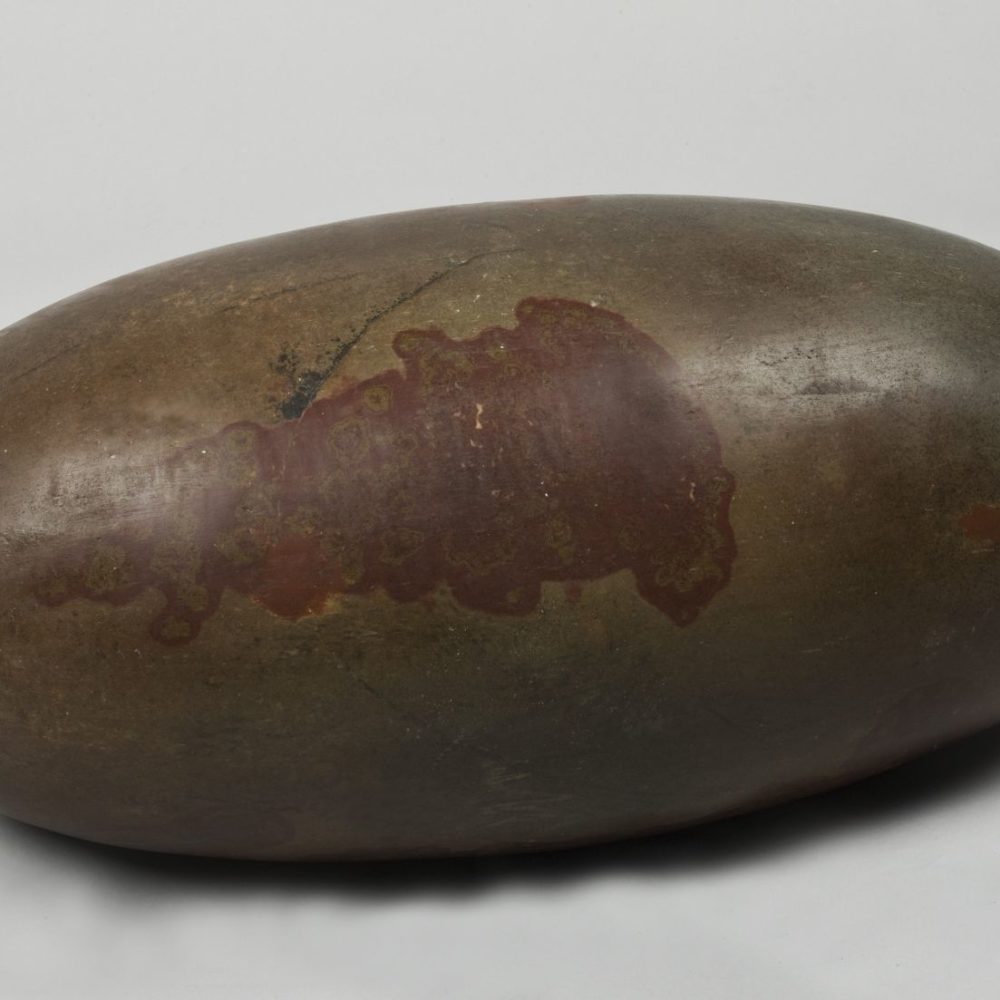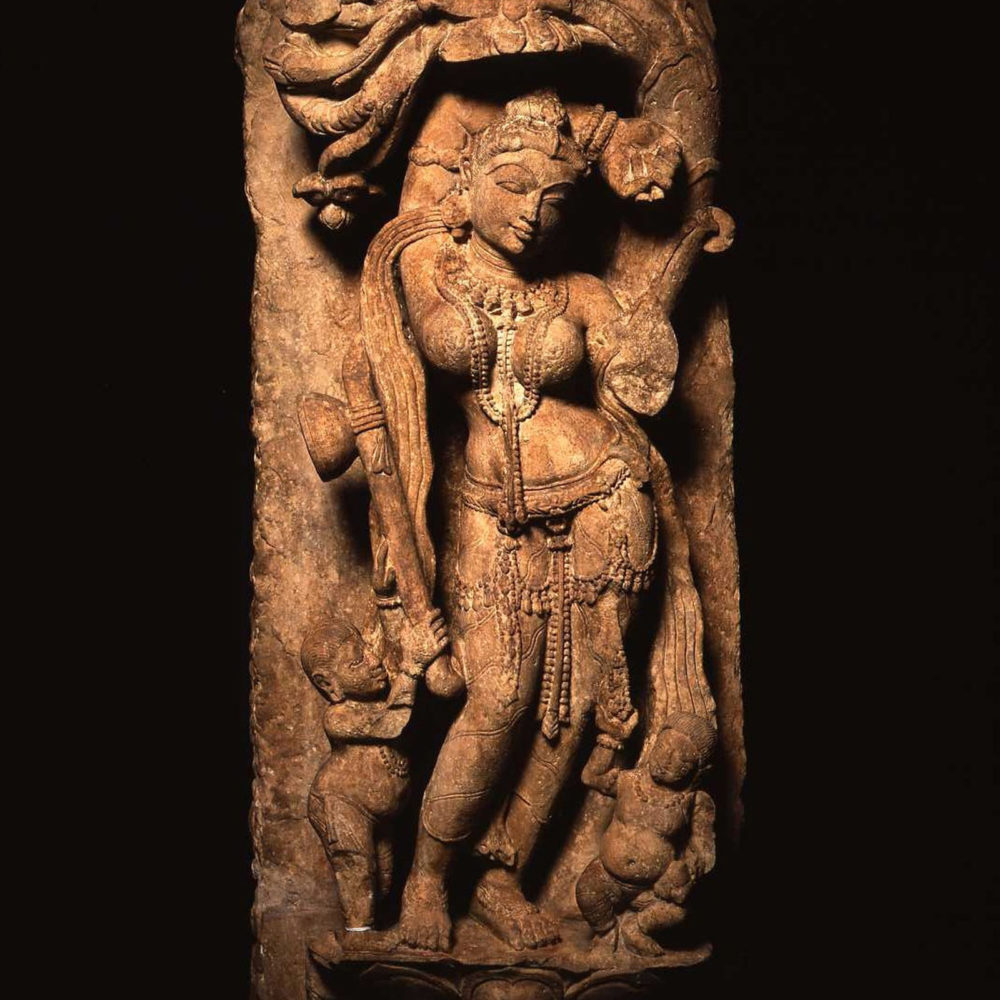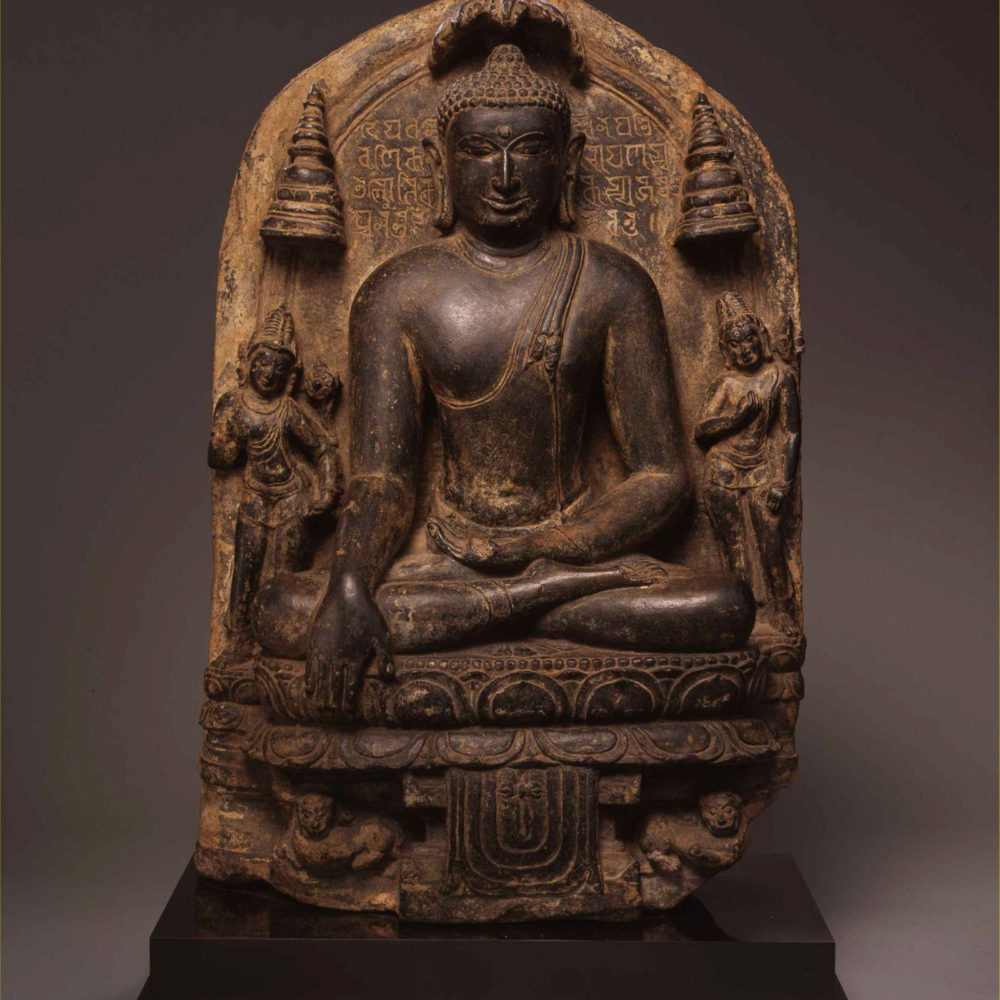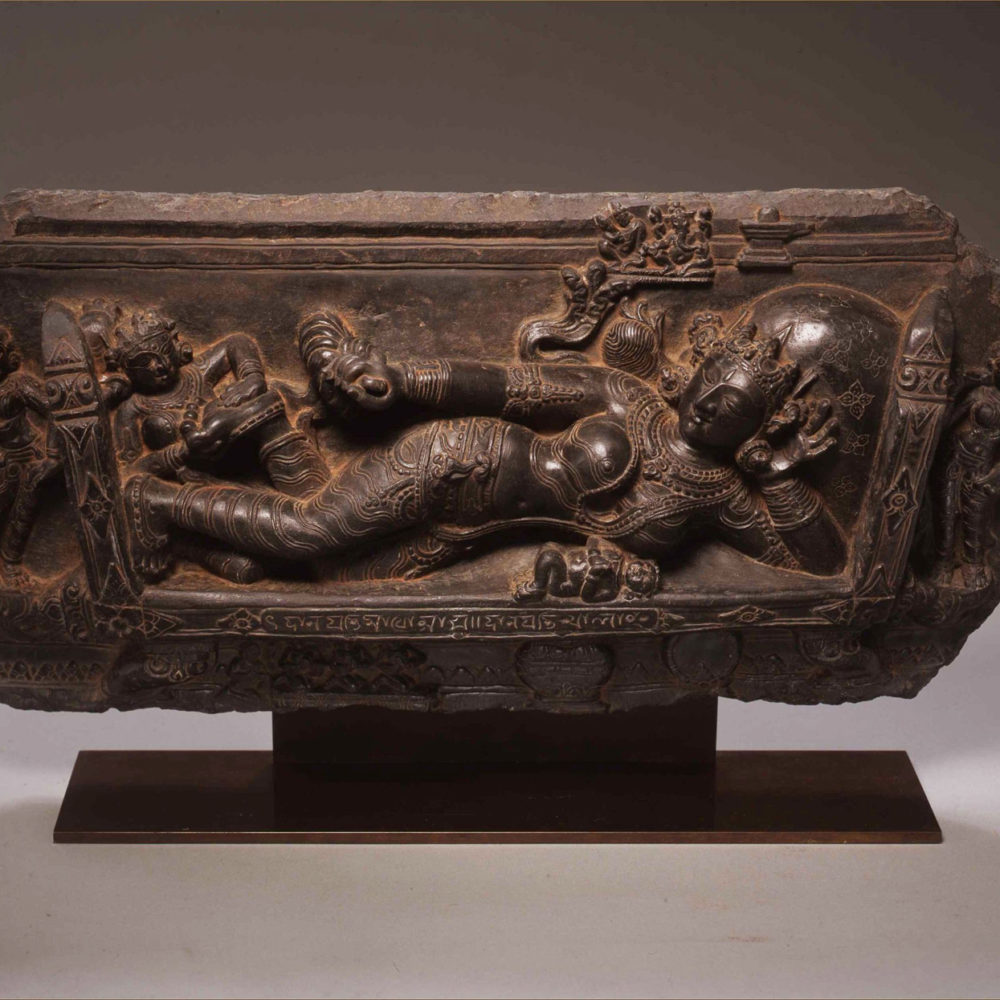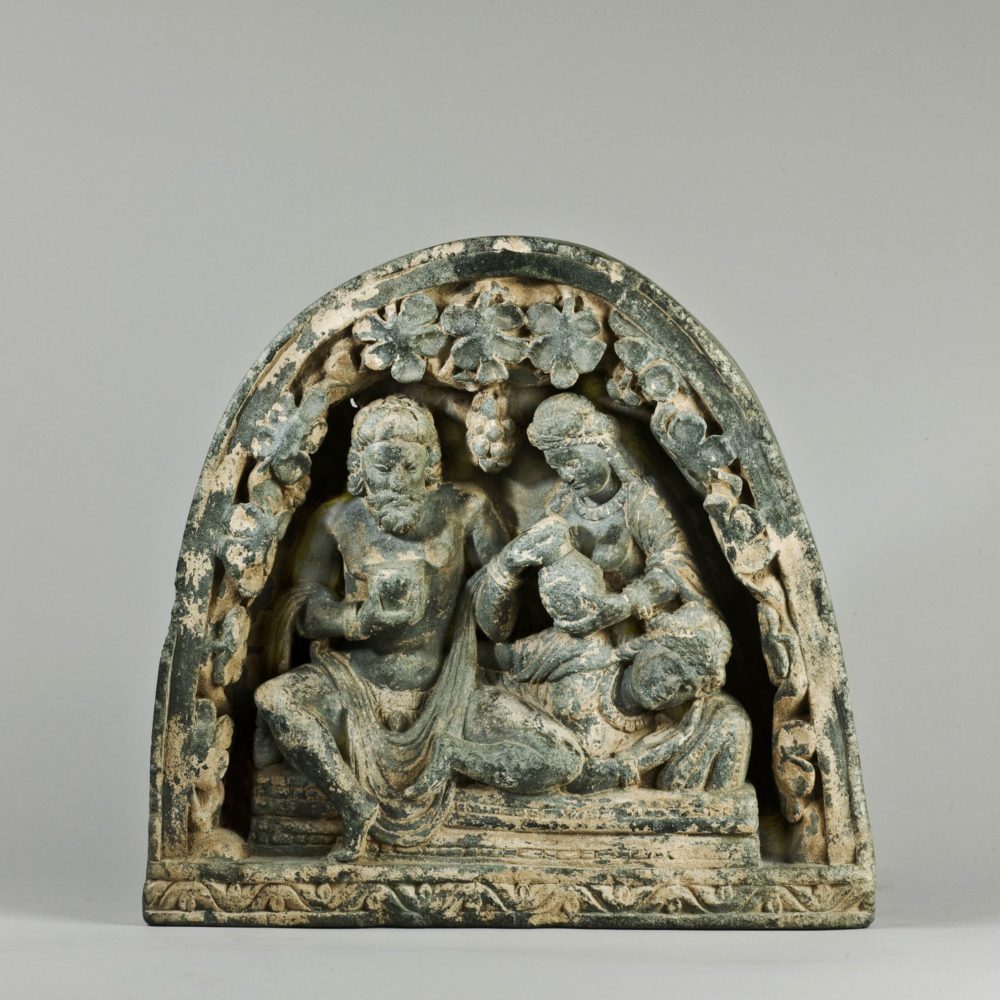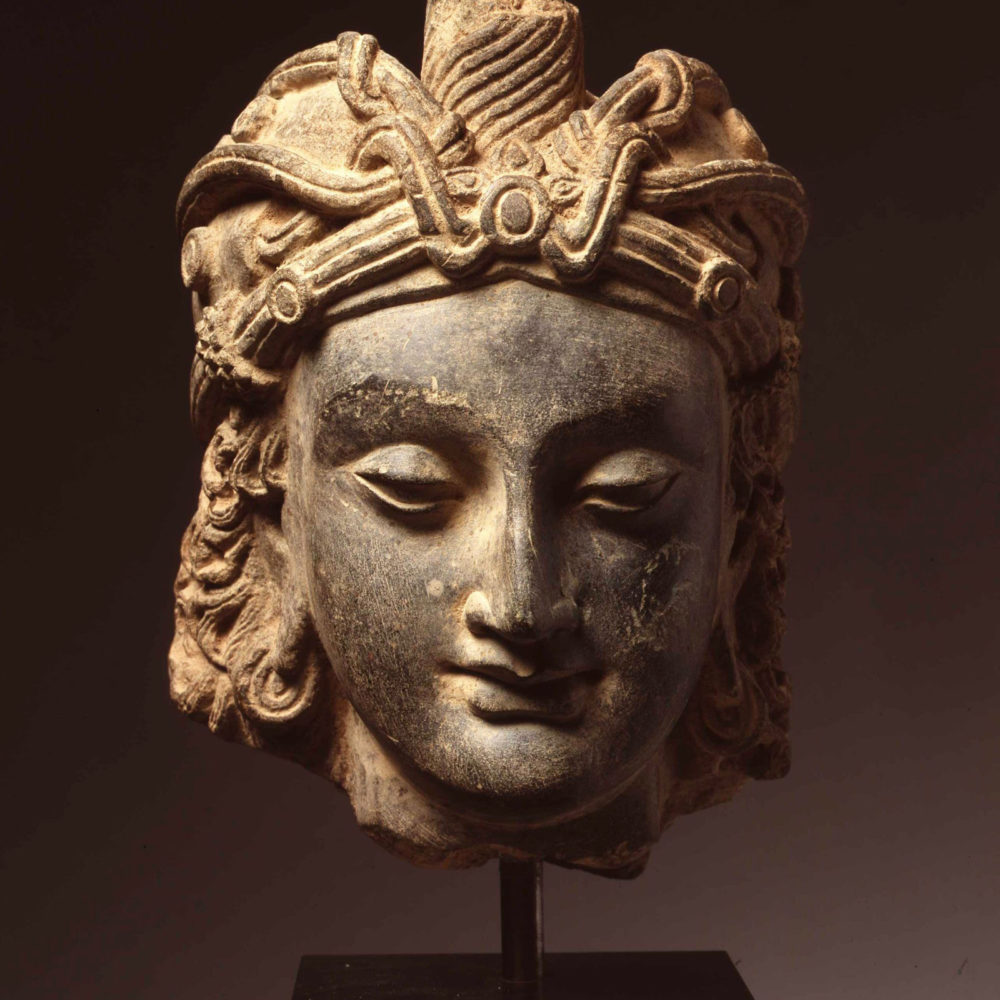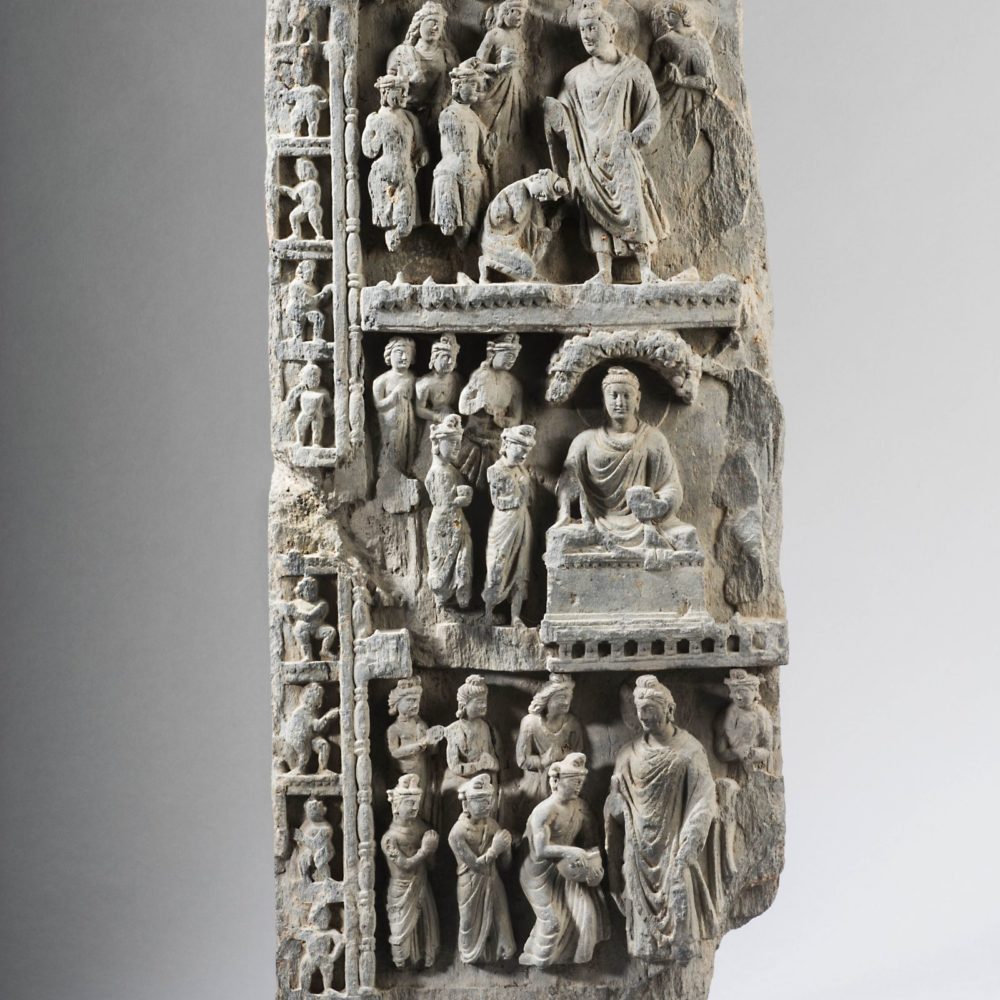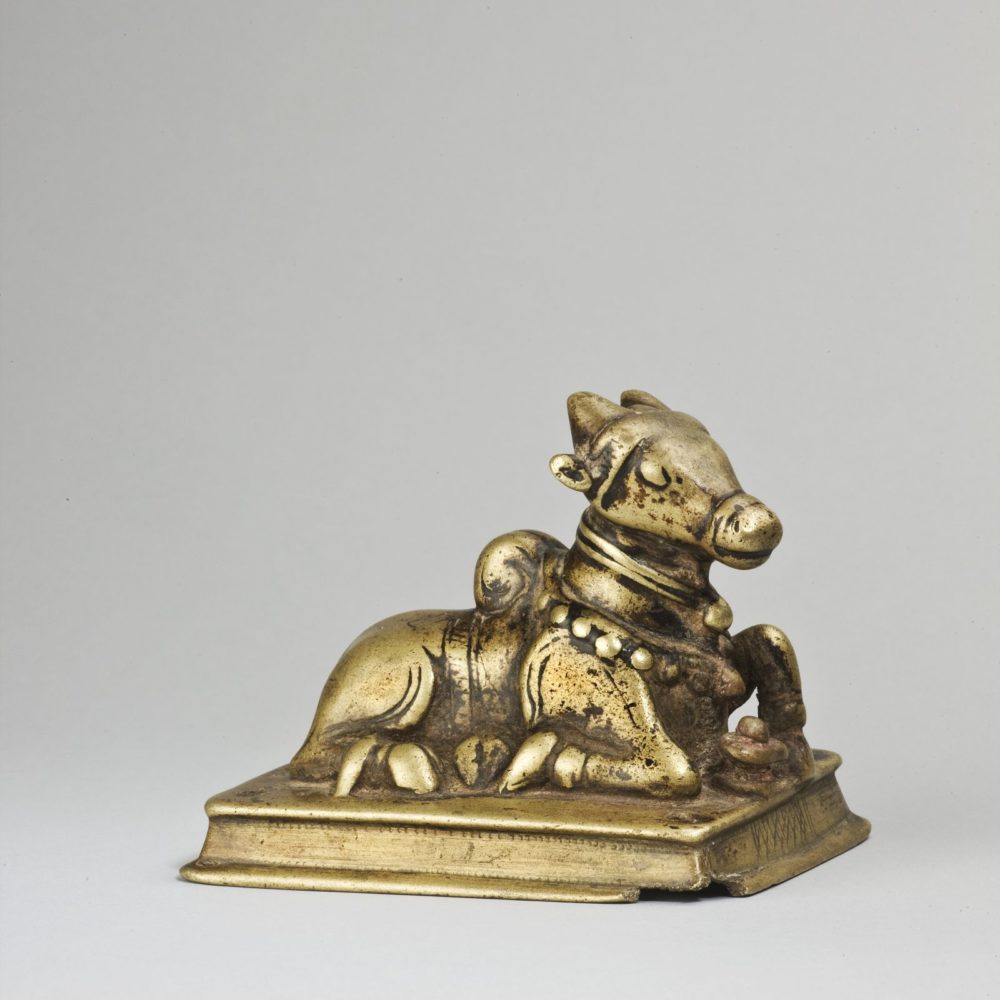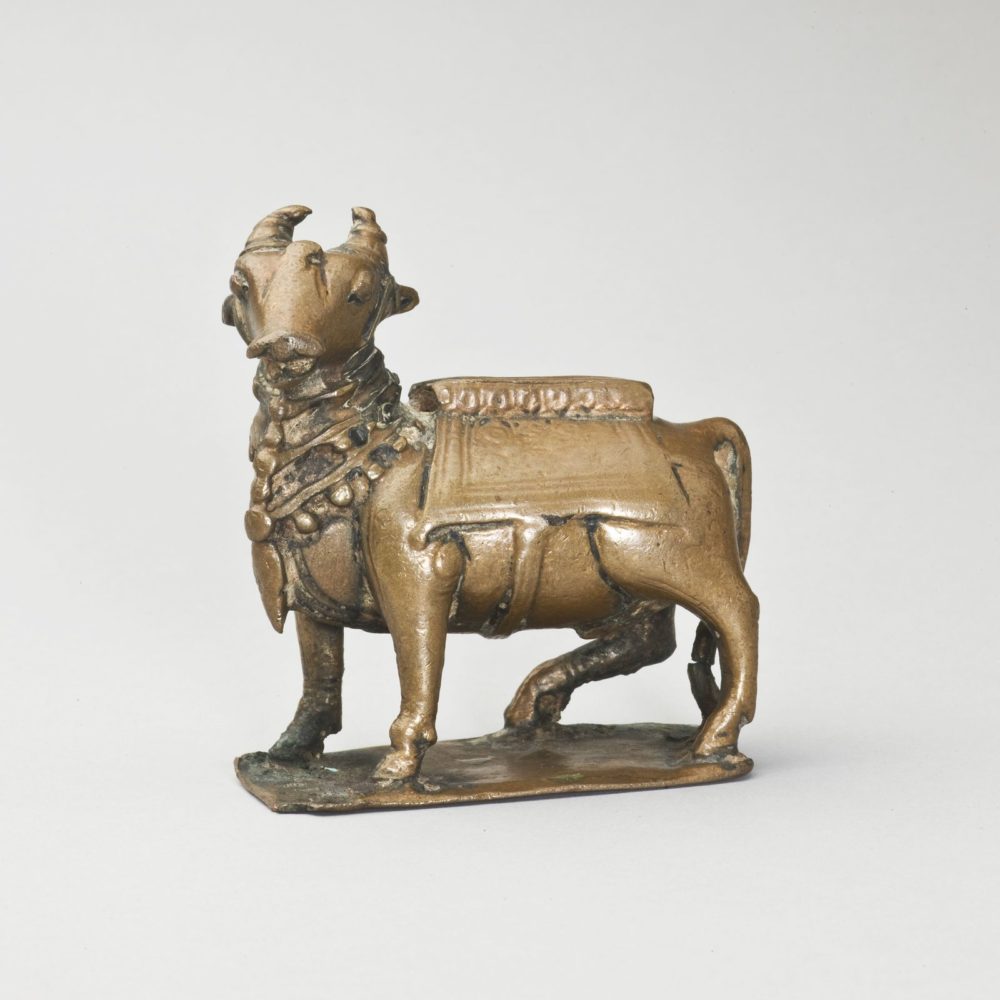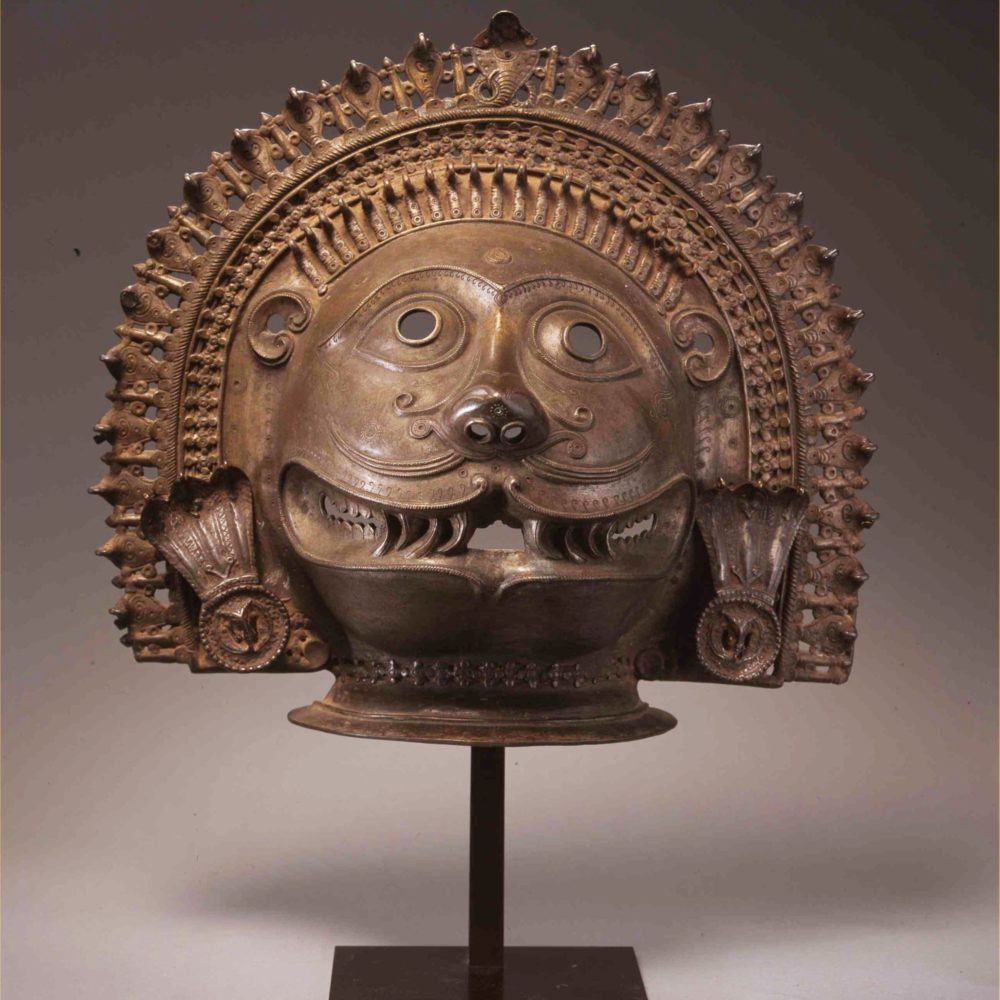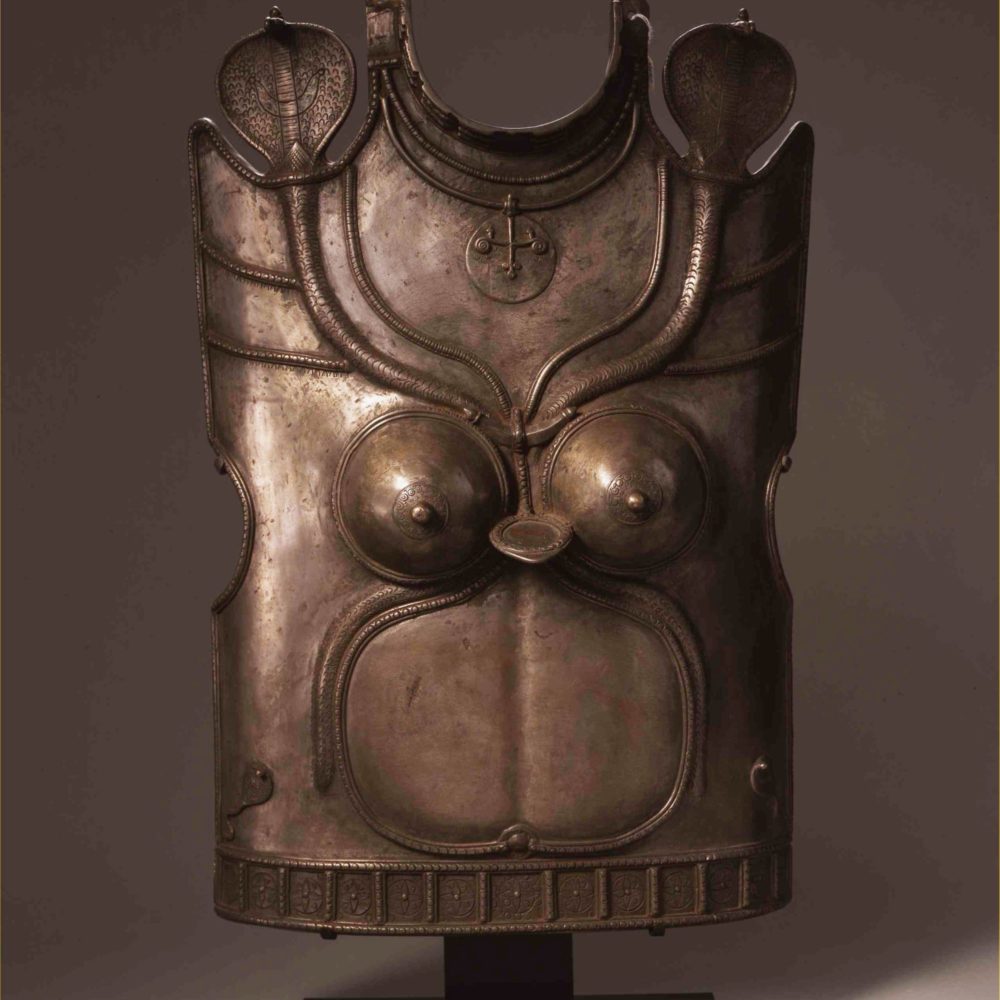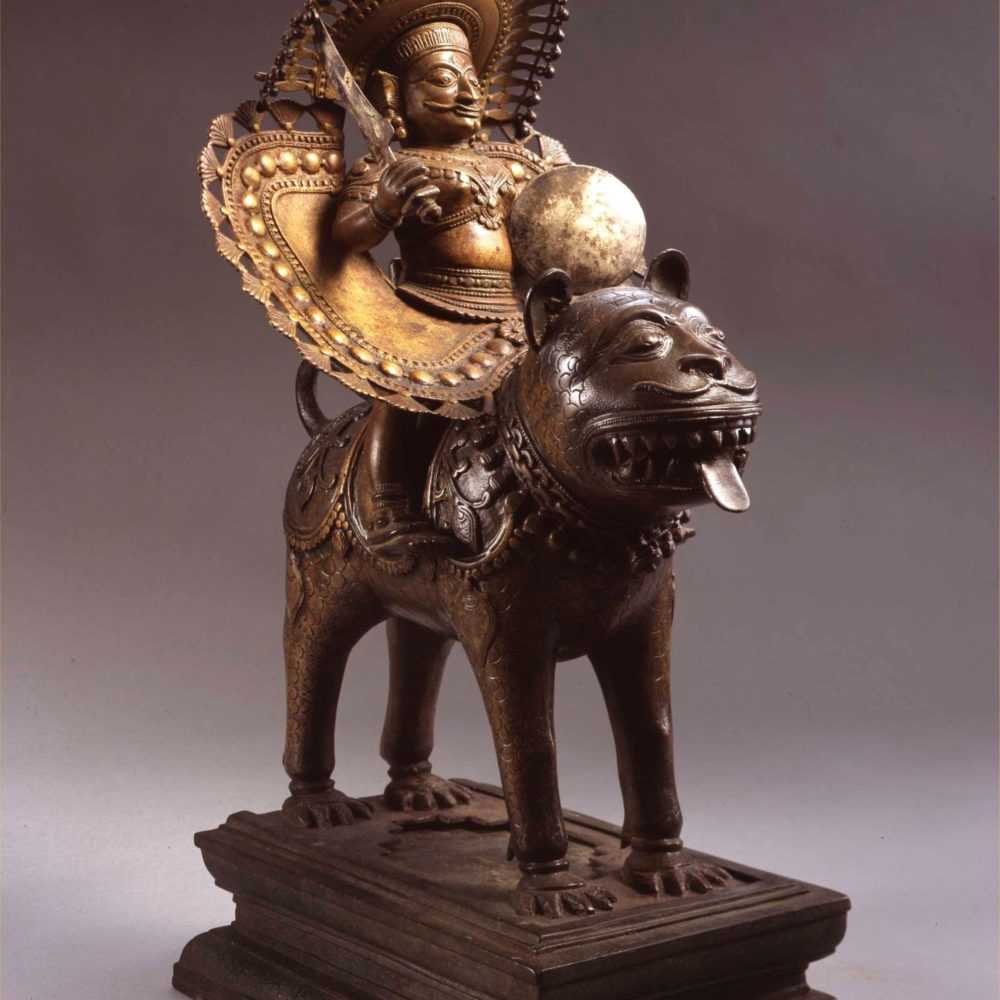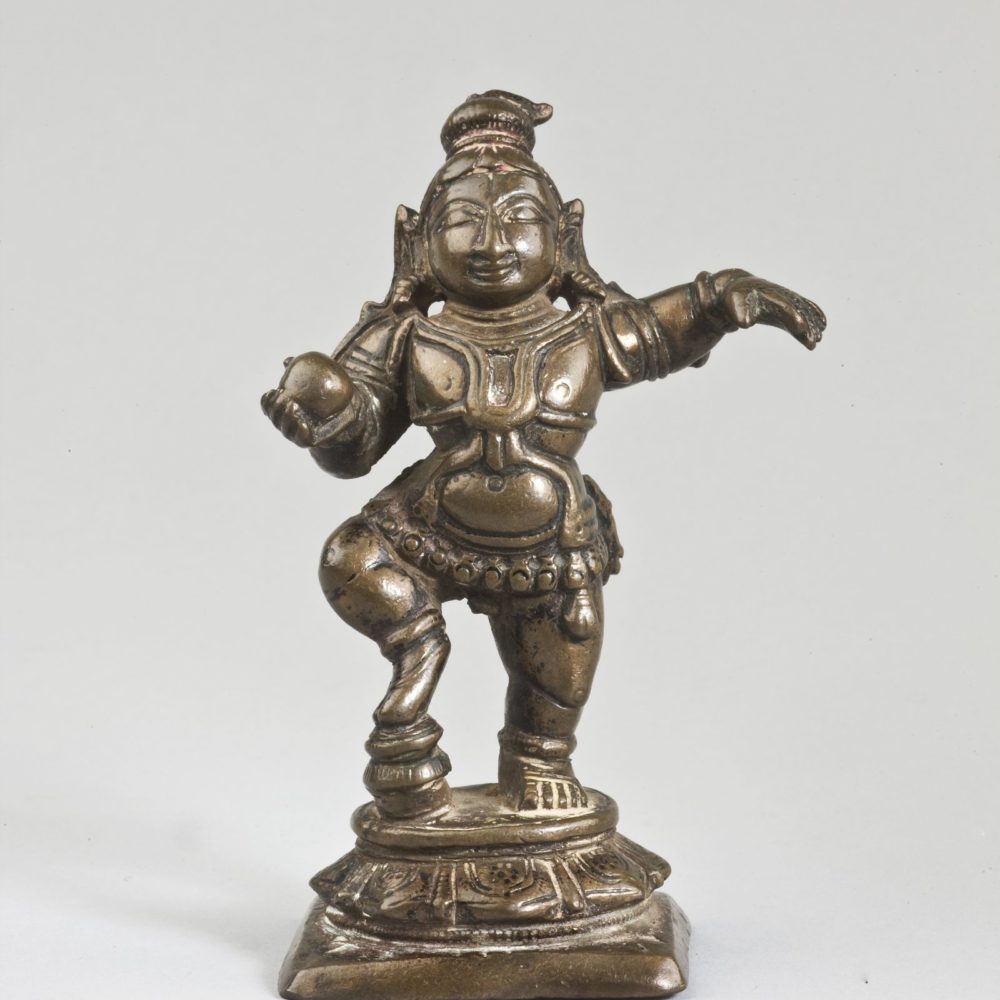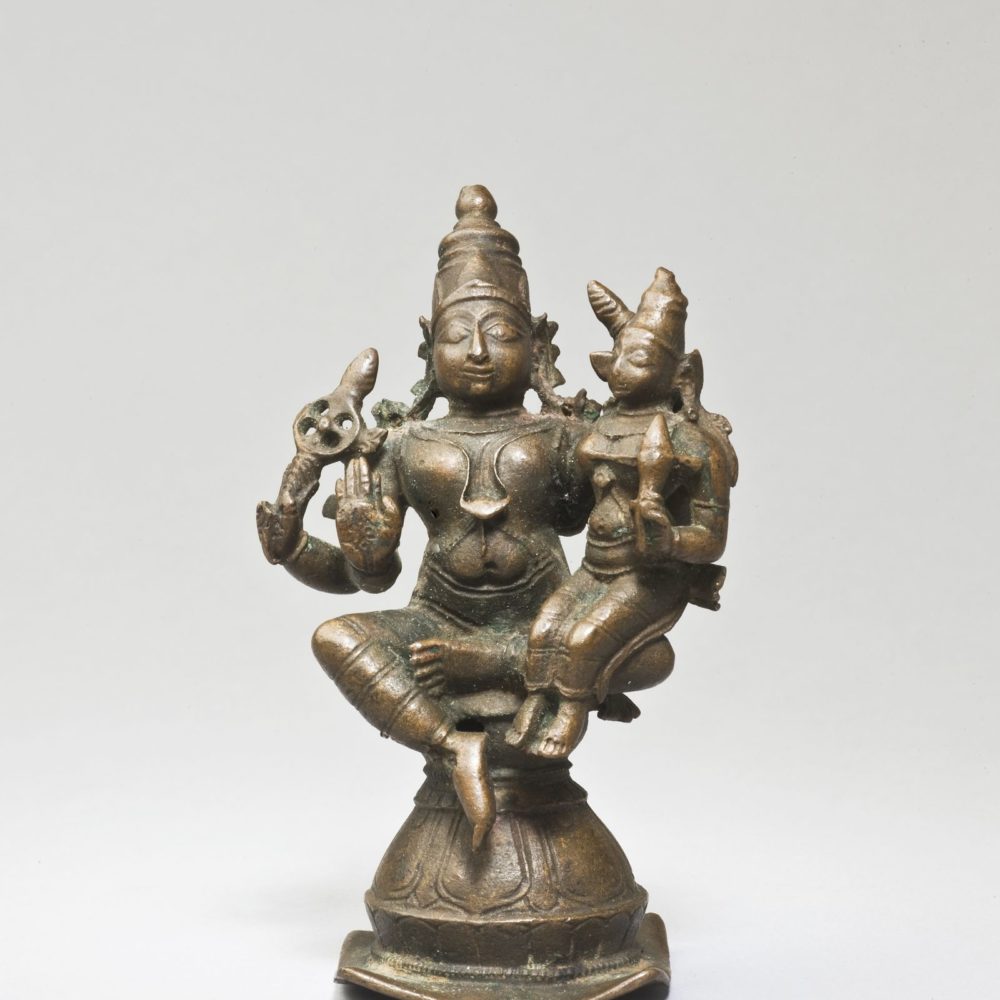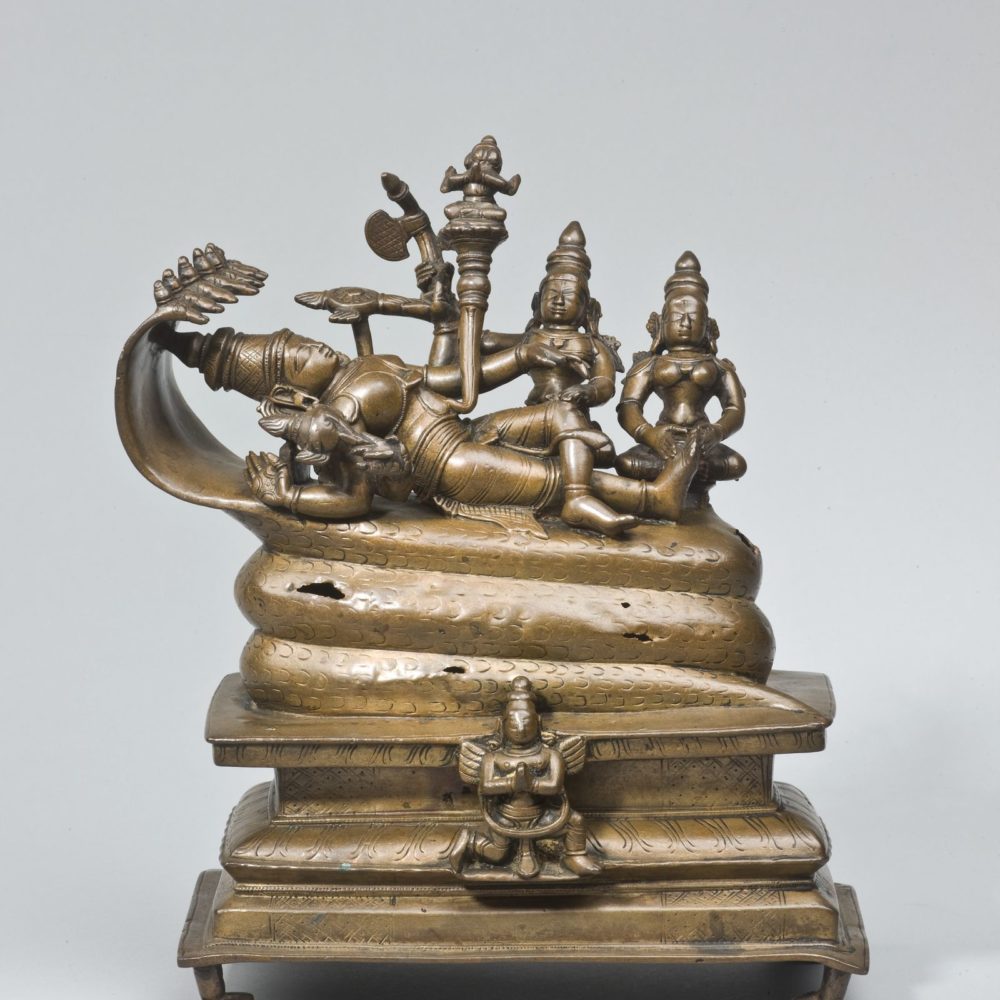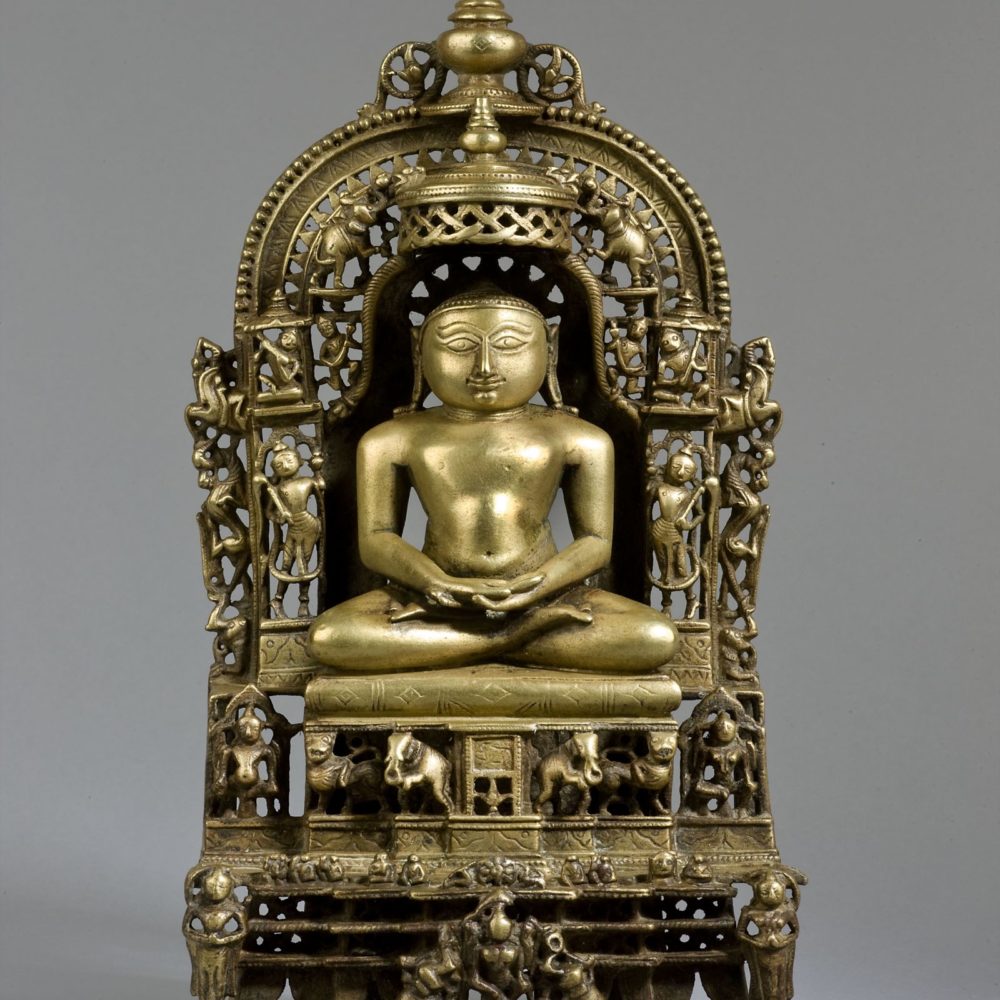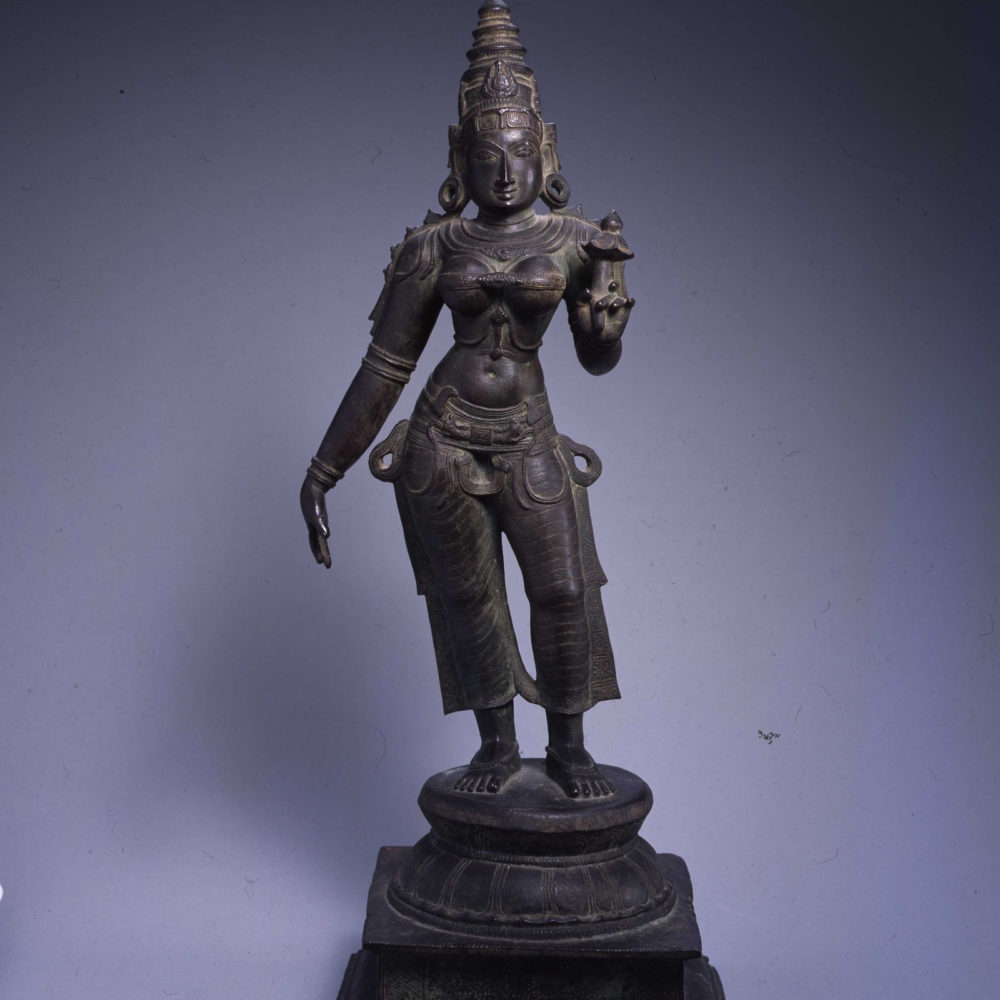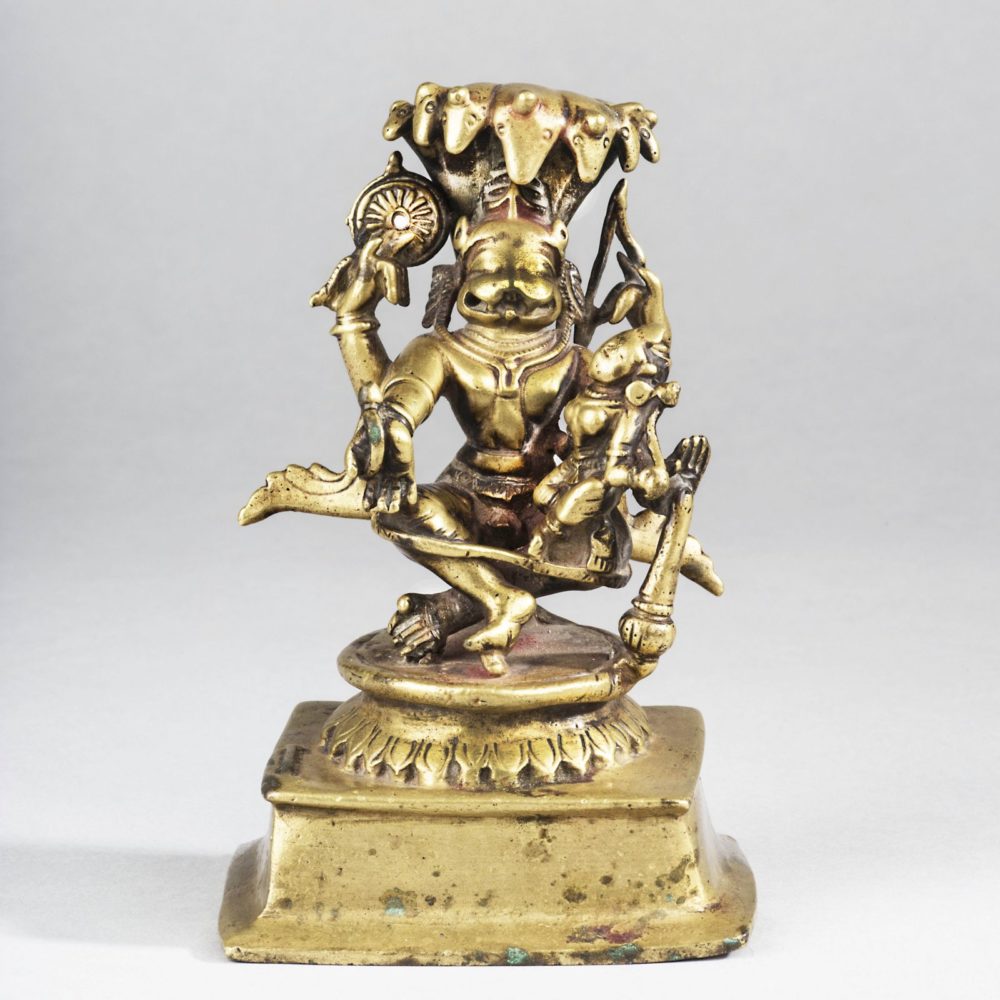An early Vijayanagara standing bronze figure of Lakshmi
14th century, South India
Height: 55.9 cm, 22 inches
At the end of the Chola dynasty (the ‘Golden Age’ of bronze works of art), unstable times followed in Southern India; however, with the establishment of the Vijayanagara dynasty, in the second half of the 14th century, bronze casting was somewhat revived. There was a stylistic shift during this time – to a less fluid and more archetypal schematic form.
Lakshmi stands upon a lotus pedestal raised on a square base, and in her left hand she holds a lotus bud that symbolises purity and spiritual power. She is the goddess of prosperity – both material and spiritual wealth – and of purity and generosity. The consort of Vishnu, she is also known as Sridevi (devotees are familiar with her one hundred and eight names!). A horizontal band, or kuchabandha, that encircles her full rounded breasts helps to distinguish her from Parvati.
Her headdress is a tall conical crown, or karandamakuta, with a siraschakra (decorative lotus flower) that radiates from the back of the head. The details of her clinging lower garment with side panels and elaborate katisutra (waistband) are good examples of the way in which Vijayanagara artisans interpreted Chola designs. In earlier figures, the folds of drapery are ribbed on the surface of the bronze – whereas, in later figures, these folds are represented by incised lines. The goddess is further adorned with circular earrings, necklaces, armbands and foot ornamentation. Her features are stylised – depicting open eyes under ridged eyebrows that meet in the middle at the bridge of a long straight nose, above a slightly smiling mouth.
Provenance
Old French Collection
Similar Examples
Asian Art at the Norton Simon Museum, Volume I: Art from the Indian Subcontinent, by Pratapaditya Pal, published by Yale University Press in association with The Norton Simon Art Foundation – pages 246 to 248.


